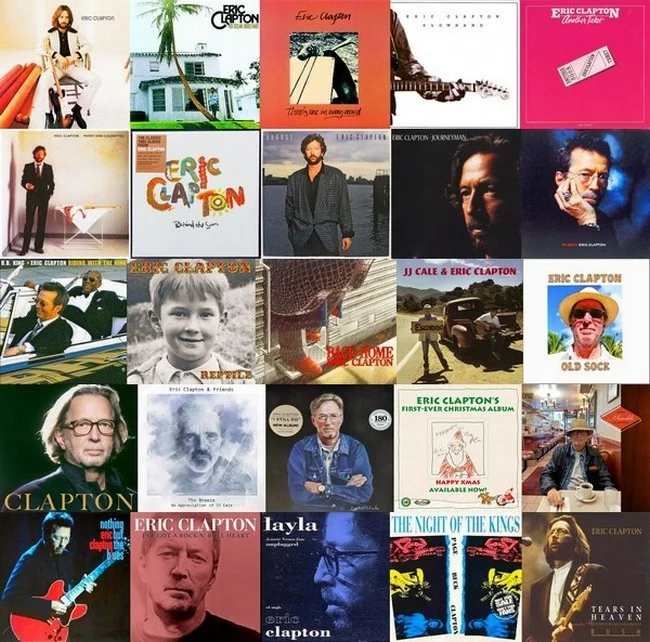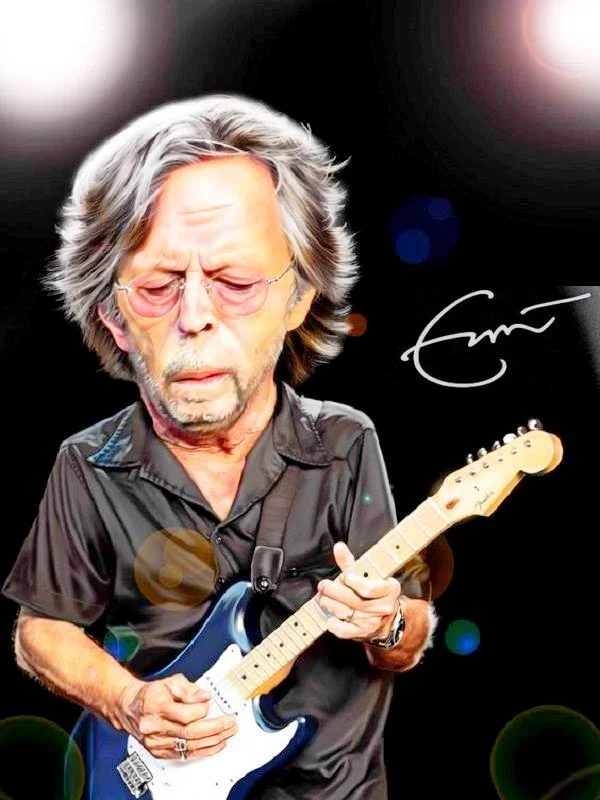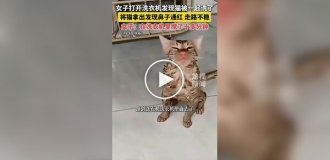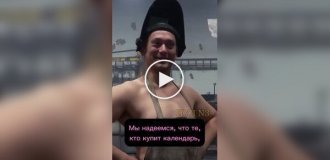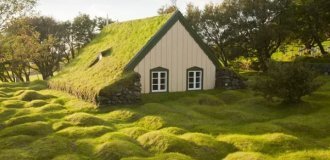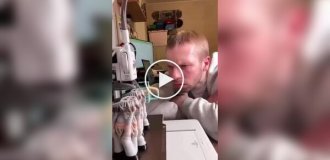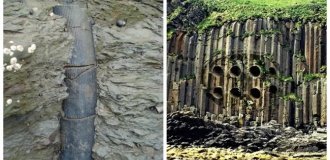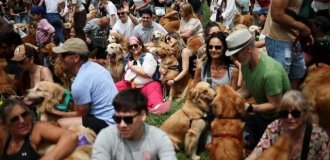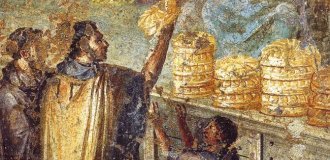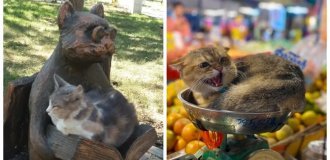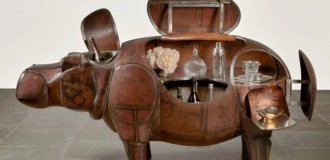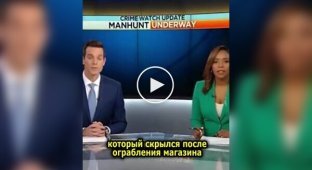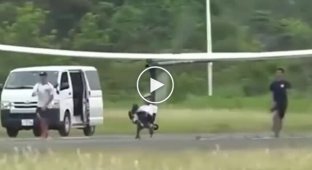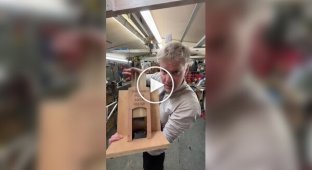Never Became a "Beatle" (64 photos)
Eric Clapton celebrates his 80th birthday 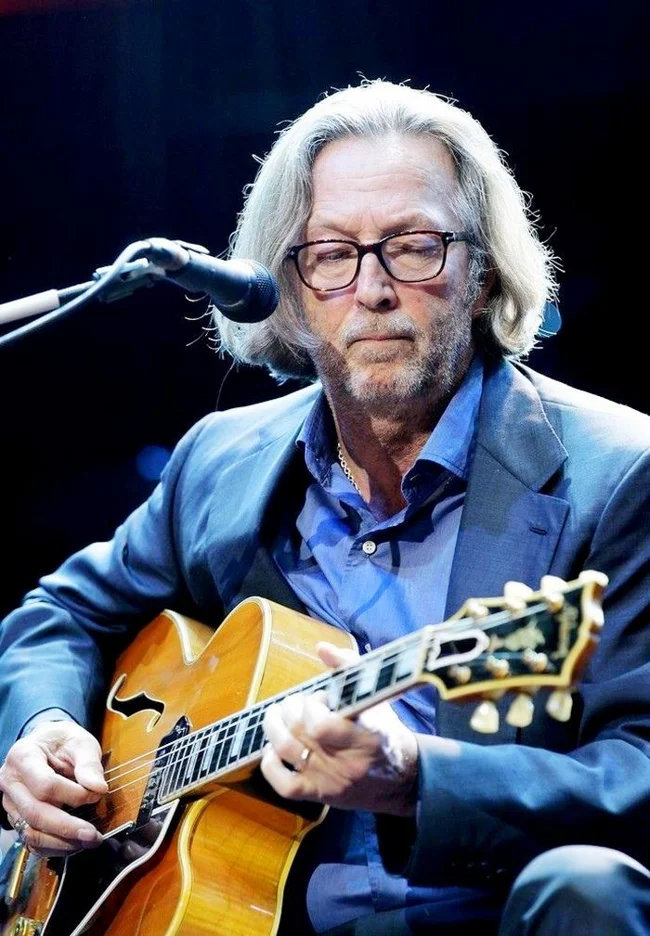
British rock musician, guitarist, vocalist and composer, Commander of the Order of the British Empire Eric Patrick Clapton was born on March 30, 1945 in the village of Ripley (Surrey, England), in the family of 16-year-old Patricia Molly Clapton and 24-year-old Canadian soldier Edward Walter Fryer. In 1944, before Eric was born, his father was sent to the front, and after the war he returned to his homeland, Montreal (Canada). He apparently never knew about the birth of his son. 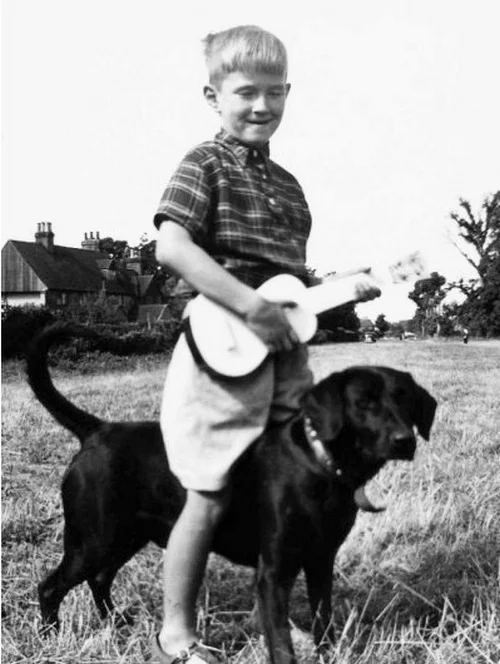
Eric in the village of Ripley (Surrey)
Eric grew up with his grandmother Rose Clapton and her second husband Jack Clapp, Patricia's stepfather. As a child, he thought that his mother was his sister, and his grandparents were his father and mother. The similarity of their surnames gave rise to the mistaken belief that Clapton's real surname was Clapp. A few years later, his mother married another Canadian soldier and moved with him to Germany, leaving Eric with his grandparents in Surrey. 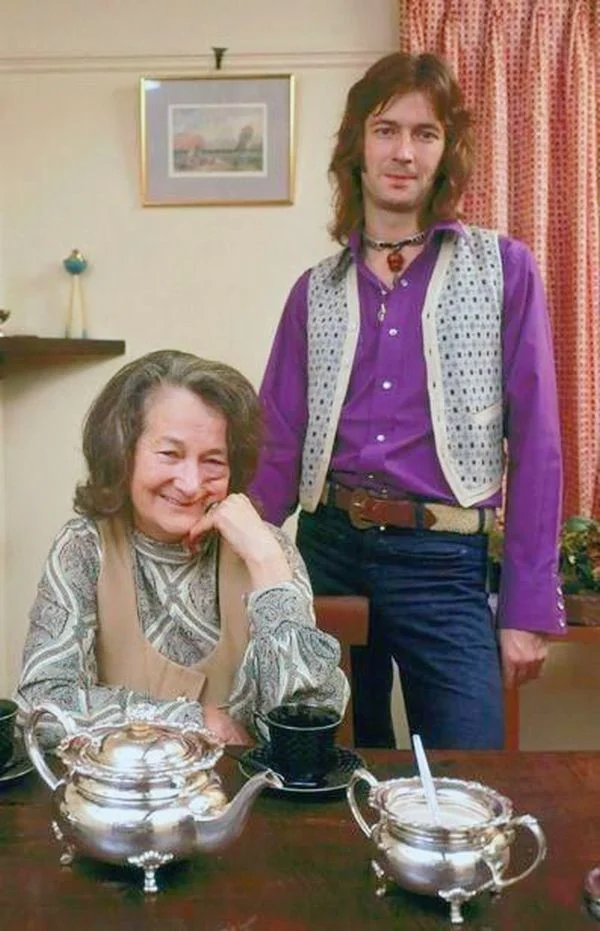
Eric Clapton with his grandmother Rose
On his 13th birthday, Clapton was given a German acoustic guitar "Hoyer" by his mother, but the steel-string instrument was difficult to play, and Eric quickly lost interest in it. But after 2 years, he picked up the guitar again and never parted with it again.
From an early age, Clapton was influenced by the blues, spending hours studying chords and playing along with audio recordings. He used a portable tape recorder called "Grundig", listening to the tapes over and over until he felt he was doing it right.
After graduating from Hollyfield School in Surbiton, Kingston upon Thames, London, Eric entered Kingston College of Art (now Kingston School of Art) in 1961, but was expelled at the end of the academic year, as he focused all his attention on music rather than on fine art. 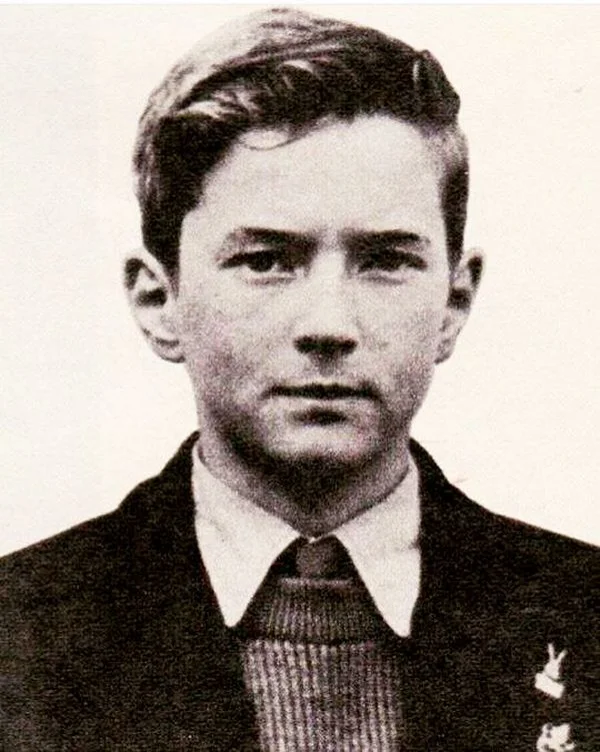
However, his skillful guitar playing already at the age of 16 attracted the attention of others. Eric began performing as a busker in Kingston, Richmond and London's West End. From 1962, he began performing as a duo in pubs around Surrey with fellow blues enthusiast David Brock. At the age of 17, Clapton joined his first band, The Roosters, which played early British rock and blues, and performed with them from January to August 1963. 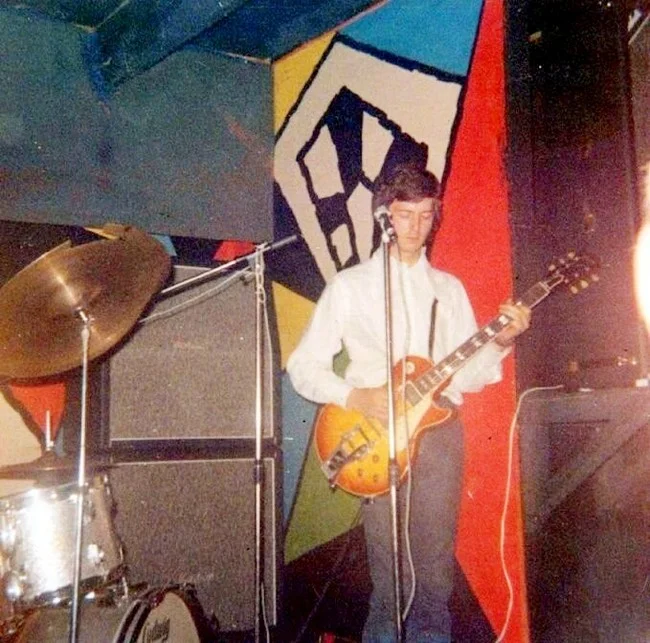
And in October 1963, the guitarist joined The Yardbirds, a band with a strong blues sound, where he played until March 1965. Combining the playing techniques of leading blues guitarists (Buddy Guy, Freddie King, B.B. King), Eric developed his own unique style, quickly becoming one of the most popular guitarists on the British scene (although many musicians claim that Clapton never learned to play "correctly"). 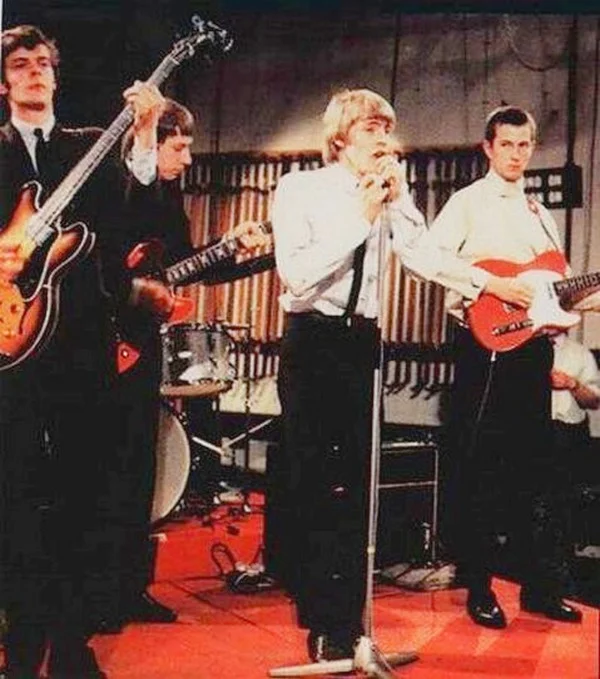
Eric Clapton as part of the Yardbirds, 1964
The Yardbirds, performing cover versions of blues and rhythm and blues songs by famous American bluesmen, began to gain fame, and even took the place of the Rolling Stones at the Crawdaddy Club in Richmond (Surrey, England).
In late 1963 - early 1964, the group toured the UK with the famous American bluesman and singer Sonny Boy Williamson. Two years later, recordings of their performances were released as the album "Sonny Boy Williamson & The Yardbirds". 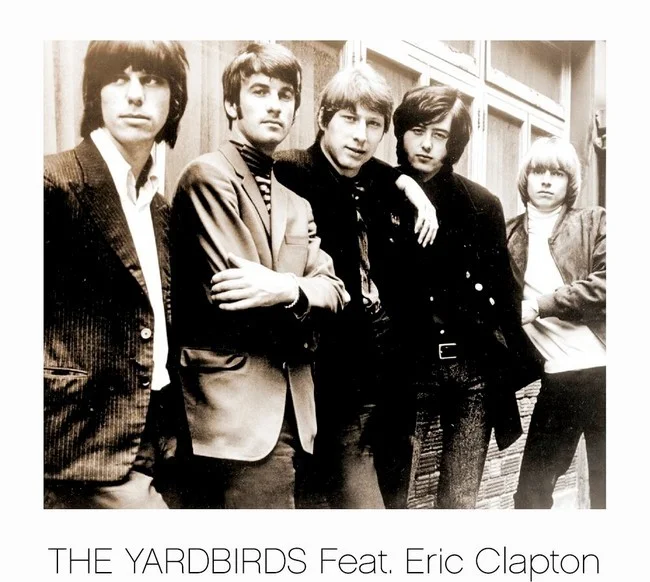
And in February 1964, the group signed a contract with a major British record label "Columbia Graphophone Company", and in December of the same year released their debut album "Five Live Yardbirds", compiled from concert recordings made at the London club "Marquee", which became Clapton's earliest official recording.
It was during this period that whenever Eric broke a string during a concert, he would remain on stage to replace it. The audience would wait it out, doing what is called a "slow handclap." Clapton said that his nickname "Slowhand" was coined by their producer Giorgio Gomelsky as a pun: he insisted that Eric was a fast player, so he turned "slow handclap" into "slowhand." 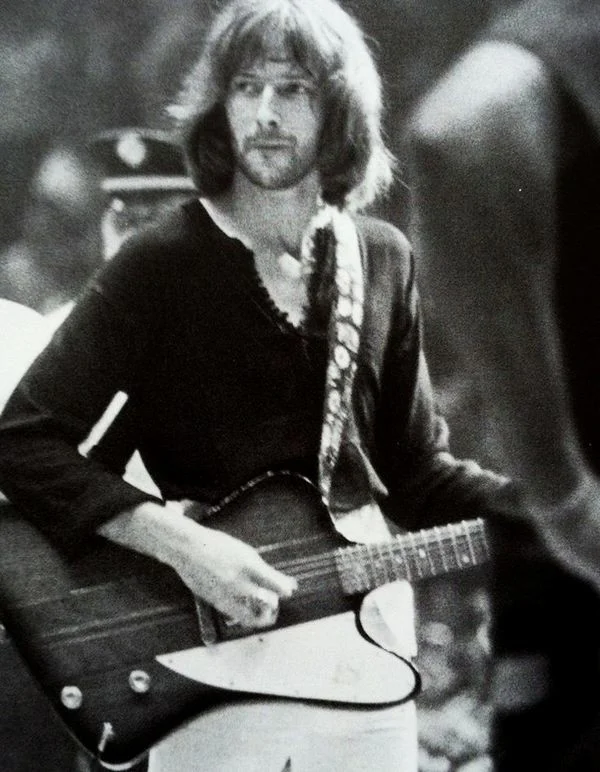
In December 1964, Clapton and the Yardbirds made their first appearance at London's Royal Albert Hall. He would go on to perform there over 200 times. 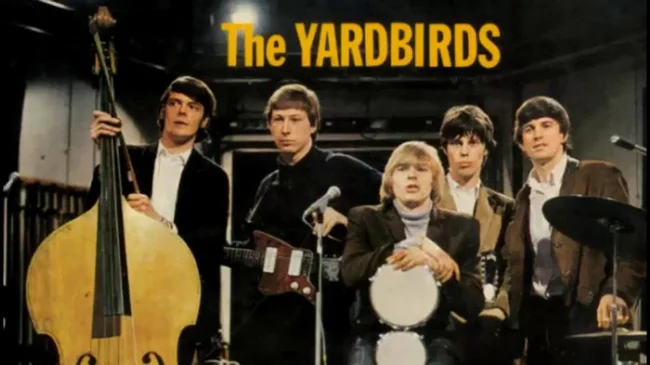
And in March of the following year, the Yardbirds had their first hit with Eric on guitar, "For Your Love" (a Top 10 hit in the US), written by guest pop writer Graham Gouldman, who had written lyrics for Herman's Hermits, The Hollies and others. And, partly because of the success of "For Your Love", the band chose the path towards a pop sound. Clapton, who was devoted to the blues, was against the change in style, and left the group, recommending his friend, guitarist Jimmy Page, as a replacement. However, Page was making a very profitable career as a studio musician at the time, and recommended his friend, Jeff Beck, to them. 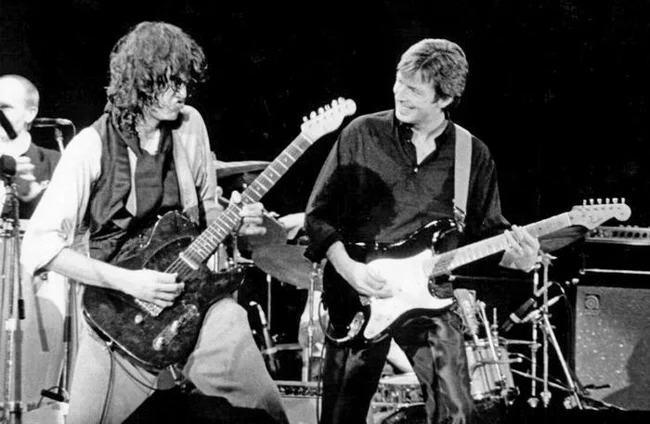
Eric Clapton and Jimmy Page
Eric joined John Mayall & the Bluesbreakers in April 1965, but left a few months later. And in June of the same year, he was invited by Page to jam together. They recorded a number of tracks, later released under the name "The Immediate All-Stars".
That same summer, Clapton went on tour in Greece with the band The Glands, where his old friend Ben Palmer played keyboards. And in November 1965, Eric decided to return to Mayall's group. During his time with the Bluesbreakers, Clapton's playing created an image for him as the best club blues guitarist. He gained fame for playing on their album "Blues Breakers with Eric Clapton", although it was released after Eric finally left the group in July 1966. 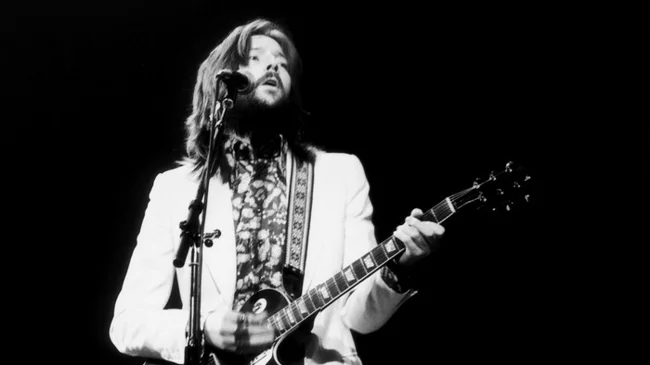
While still a member of John Mayall & the Bluesbreakers, Clapton briefly performed with a blues-rock band, immodestly called Eric Clapton and the Powerhouse, where, in addition to him and Palmer, Steve Winwood, Jack Bruce, Paul York and Paul Jones played. However, the group broke up less than a year later, having recorded only a few songs.
After leaving the Bluesbreakers, Clapton was invited by drummer Ginger Baker to join the group Cream, which he organized, where Bruce already played bass guitar. There Eric began to try himself as a singer and songwriter, although most of the vocals and musical material, written together with the poet Pete Brown, belonged to Bruce. 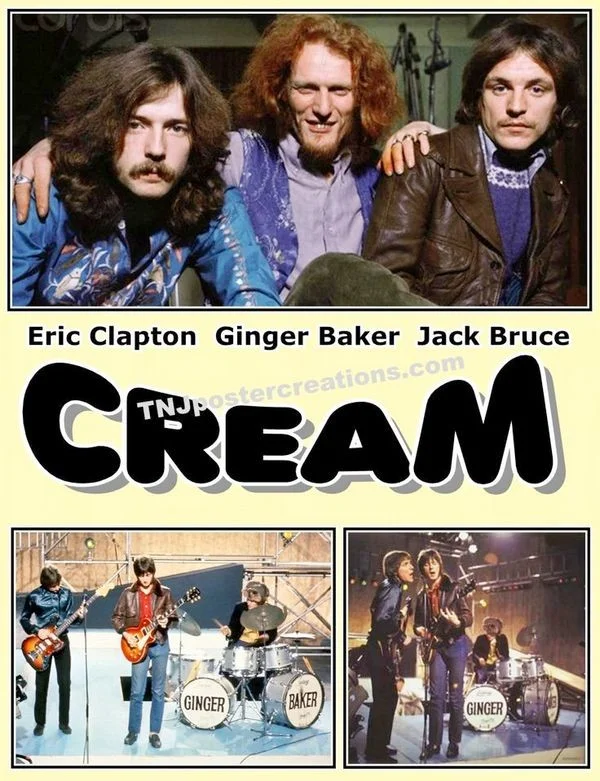
Cream's debut was an unofficial performance on July 29, 1966 at the Twisted Wheel Club (Manchester), followed by an official one - two days later at the National Jazz and Blues Festival (Bluesfest) in Windsor. The group attracted attention thanks to loud blues jams and long solos. 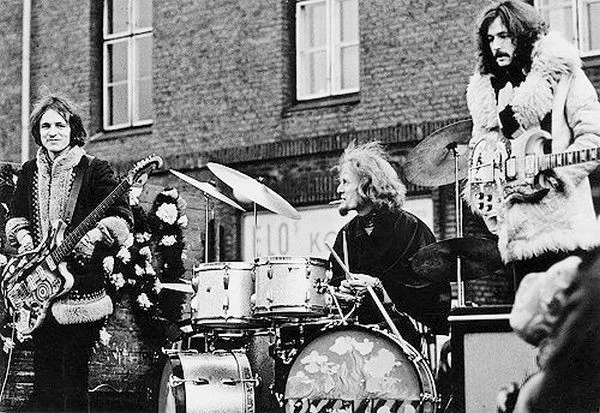
And by the beginning of 1967, fans of the new blues-rock sound of Great Britain began to note Clapton as the best British guitarist. But then, suddenly, American virtuoso Jimi Hendrix appeared in London, using a "howling" reverb in his playing, producing an unusual sound. On October 1, 1966, he attended a Cream concert at the Polytechnic of Central London (now the University of Westminster (UW London)), and decided to jam with them, performing a double-length version of the popular composition "Killing Floor" by American bluesman Howlin' Wolf. Many British musicians note that it was Hendrix's style and manner of playing that had a significant influence on the next stage of Clapton's career. 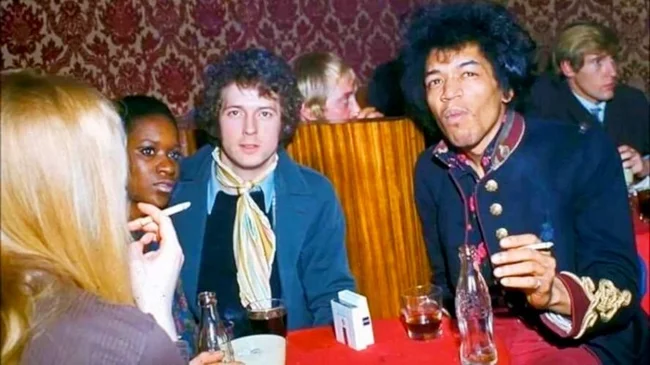
Eric Clapton and Jimi Hendrix, late 1966
In March 1967, Cream visited the United States for the first time, giving 9 concerts at the RKO Theater in New York. There, in New York, from May 11 to 15, 1967, the musicians recorded the album "Disraeli Gears". It featured Clapton's searing guitar parts, Bruce's soaring vocals and smooth bass playing, as well as Baker's powerful, rhythmic jazz sound. The talents of the members of Cream made them influential in the power trio music circles. Cream's repertoire ranged from hard rock to long blues instrumentals. 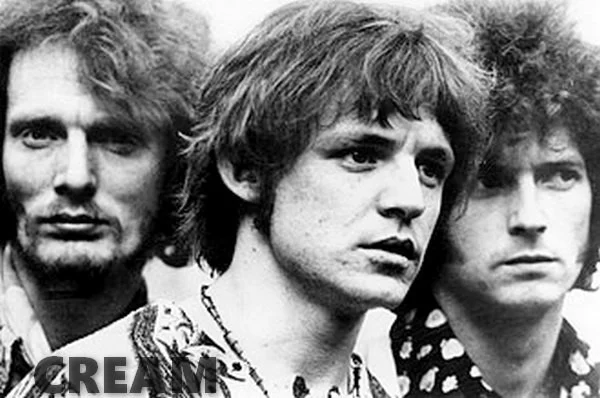
Within 28 months, the band had become a commercial success, selling millions of records and playing throughout the United States and Europe. The musicians redefined the role of the instrumentalist in rock and became one of the first blues-rock bands to use long improvisational sessions. Although Cream was hailed as one of the greatest bands of their time, and Clapton's reputation as a guitar legend reached new heights, the group did not last long. Drugs and alcohol increased the tension in the relationships between its members. A harsh critical review in Rolling Stone magazine about their concert during the second tour of the States also contributed to the death of the trio. And constant conflicts between Bruce and Baker eventually led to the disbandment of the group. And their farewell album Goodbye, which included material recorded in Los Angeles on October 19, 1968, was released after Cream had broken up. 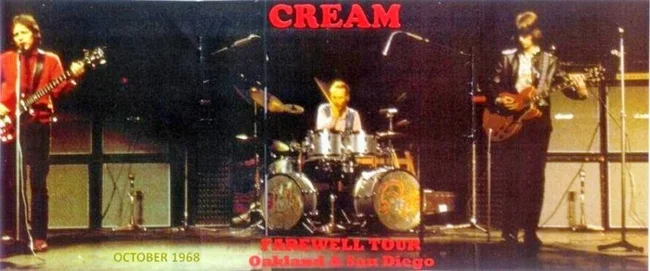
A single was released from this album, "Badge", written by Clapton with George Harrison, whom he had met when The Beatles played the same day as the Yardbirds at the London Palladium. Eric played a guitar solo on Harrison's "While My Guitar Gently Weeps", which was included on the Beatles' "White Album" (1968). Clapton later played on Harrison's debut album "Wonderwall Music", but due to contractual restrictions his name was not included on the cover.
The musicians became friends, and later played at each other's concerts more than once as invited guests. 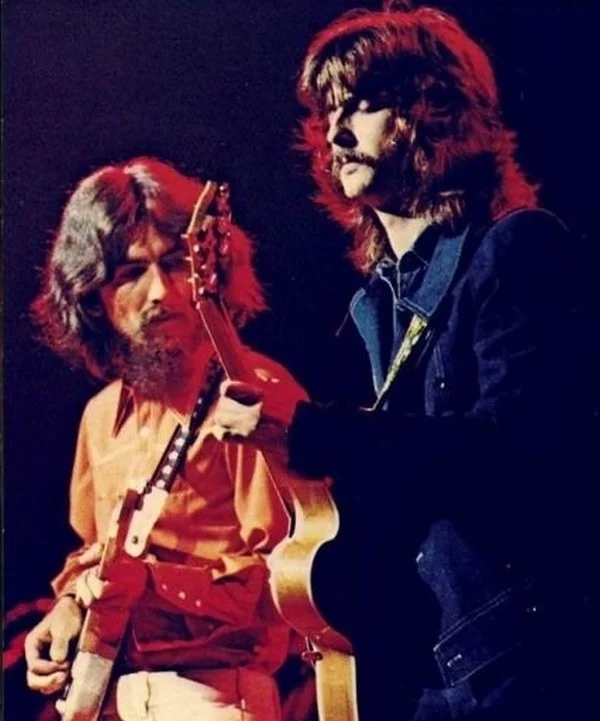
Eric Clapton and George Harrison in 1971
And when in January 1969, during the recording of the Beatles material that later turned into "Let It Be", the tension in the group increased so much that Harrison left the group for several days, the other "Beatles" even had the idea of replacing him with Clapton, who was on good terms with all the members of the band.
"I was there when John mentioned Clapton - but it was not supposed to happen. Would Eric have become a Beatle? No. Paul didn't want it. He didn't want them to break up. And then George came back." (Michael Lindsay-Hogg, director of the Let It Be video). 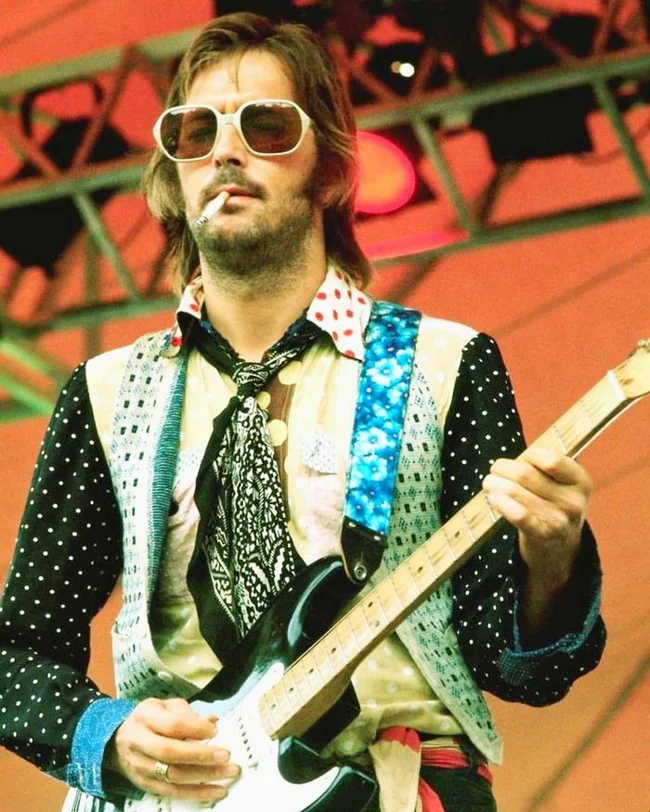
Clapton's next band was Blind Faith, formed in 1969 by Cream drummer Baker and multi-instrumentalists Steve Winwood (ex-Traffic) and Rick Grech (ex-Family). They debuted on June 7, 1969 in London's Hyde Park, where almost 100,000 spectators gathered. The musicians then held several concerts in Scandinavia, and in July - an American tour. After which Blind Faith released the only self-titled album by the group, consisting of only 6 songs, including the hit "Can't Find My Way Home", and ... quietly broke up, not having existed for even 7 months. 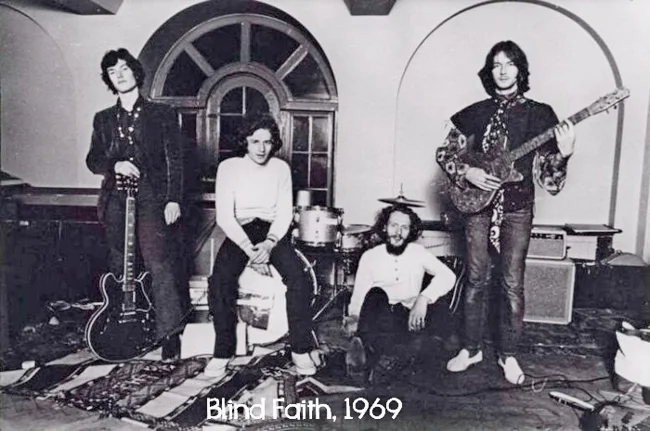
Clapton then played as a session guitarist with the group Delaney & Bonnie and Friends (Delaney and Bonnie Bramlett), who had previously performed as an opening act for Blind Faith. That same autumn, he participated in 2 concerts with the Plastic Ono Band. A performance recorded with him in September 1969 at the "Rock And Roll Revival" concert in Toronto (Canada) was released as the album "Live Peace in Toronto" (1969). 
And on September 30, 1969, Eric played lead guitar on John Lennon's solo single "Cold Turkey". Then, on December 15, 1969, he performed with Lennon and Harrison as part of POB at a concert in aid of the United Nations Children's Fund UNICEF/United Nations Children's Fund in London.
Using D&BF backing musicians and session players Leon Russell and Stephen Stills, Clapton recorded his debut solo album in between two tours. Delaney co-wrote six songs for the album with Clapton and also produced it. And Bonnie – the song “Let It Rain”. The cover version of the song by American guitarist J. J. Cale “After Midnight” from this album unexpectedly took 18th place in the American chart. 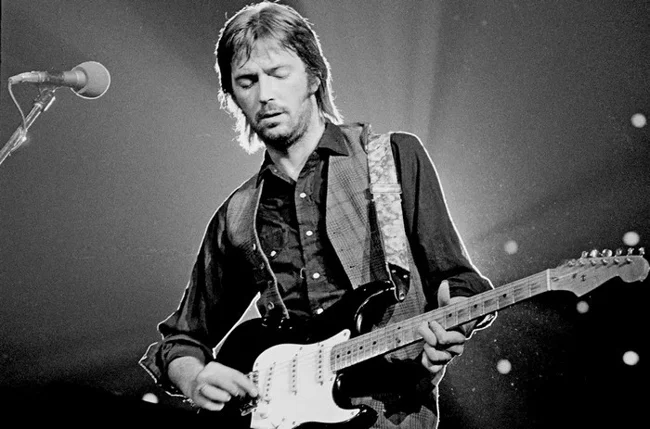
In the spring of 1970, Clapton, working with musicians from the Bramletts’ group, helped Harrison record his next solo album – “All Things Must Pass”.
Eric also recorded with other performers: Russell, POB, Billy Preston, Ringo Starr, Dave Mason. He recorded the album "The London Howlin' Wolf Sessions" with blues singer Howlin' Wolf, which also featured Wolf's longtime colleague Hubert Sumlin, Winfood, Starr and members of the Rolling Stones. But despite the superstar line-up, Eric himself, who usually welcomed any chance to play with one of his idols, later criticized this album.
Clapton's friendship with Harrison led to his meeting with his wife Pattie Boyd, with whom he immediately fell in love. But she rejected the musician's advances. Still shaken by the rejection, Erica recorded most of the material for the double album Layla and Other Assorted Love Songs, which included the title track "Layla", inspired by the classic Persian poem about a hopelessly in love young man who eventually goes mad, "The Story of Layla and Majnun"/ لیلی و مجنون by the 12th-century poet Nizami Ganjavi. One of the album's distinctive musical features is the slide guitar parts of Duane "Skydog" Allman of the American group The Allman Brothers Band. "Layla...." was recorded in August-September 1970 at Criteria Studios (Miami, USA) and released in December of the same year. 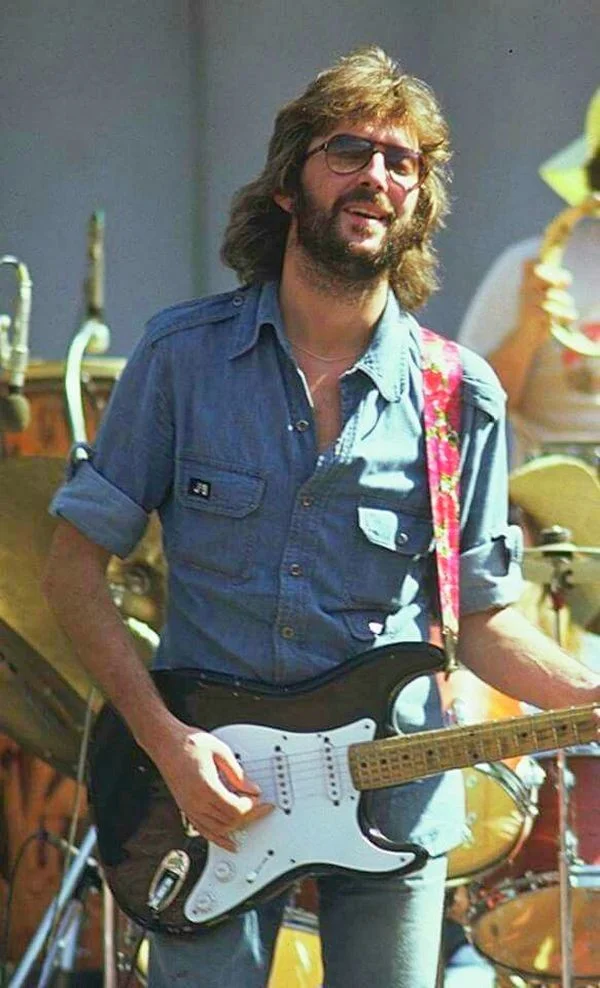
But this period turned out to be tragic for the musician. On September 17, 1970, Clapton bought a left-handed "Stratocaster", which he was going to give to Hendrix for his birthday, a cover of the song "Little Wing" by which he had recorded for the album a week earlier. But on September 18, Jimmy died of an overdose of sleeping pills. Clapton was morally devastated. And the album "Layla..." received far from enthusiastic reviews, and the upset Skydog returned to ABB. The group was preparing to record a second album, but conflicts between the members led to its breakup. And on October 29, 1971, Allman, whom Eric called his "musical brother", died in a motorcycle accident.
Under the influence of unrequited feelings for Patti, Clapton secluded himself in his residence in Surrey, where he became addicted to heroin, which led to a long break in his career, interrupted only in August 1971 for "The Concert for Bangladesh" - a charity concert organized by Harrison and Indian sitar player Ravi Shankar, to help refugees from East Pakistan and victims of the Bhola cyclone (November 12, 1970). During the concert, Clapton lost consciousness on stage, but got up and managed to finish the performance. 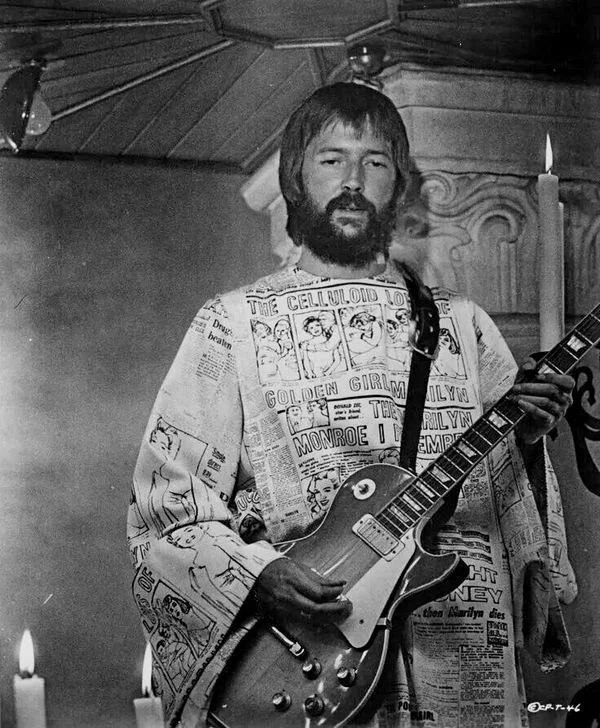
In January 1973, The Who guitarist Pete Townshend, wanting to help Clapton get rid of his addiction, organized a concert for him at London's Rainbow Theatre, a recording of which was later released as the Rainbow Concert.
And in 1974, Boyd finally left Harrison and decided to live with Eric (although they officially married only in 1979). Clapton quit heroin, although he began to drink heavily. 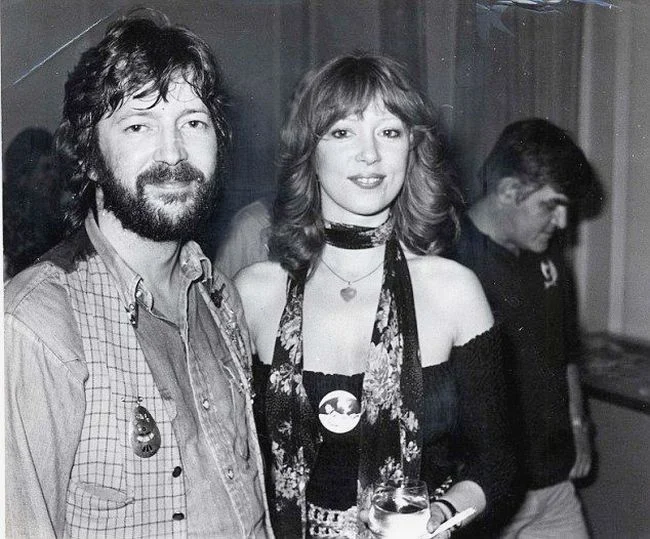
Eric Clapton and Pattie Boyd
However, that same year he assembled a touring band, which included Miami guitarist George Terry, keyboardist Dick Sims, drummer Jamie Oldaker and vocalists Yvonne Elliman and Marcy Levy. With them, Eric recorded one of his best albums - "461 Ocean Boulevard" (the address of the studio in Miami where it was recorded, 1974), in which he focused on more compact tracks with shorter guitar solos. A cover version of the song "I Shot the Sheriff" from it became the first #1 hit in the musician's career, and played a role in attracting the attention of the audience to reggae music.
Clapton's next album, There's One in Every Crowd (1975), continued this trend. He went on a world tour, which resulted in the live album E.C. Was Here that same year. 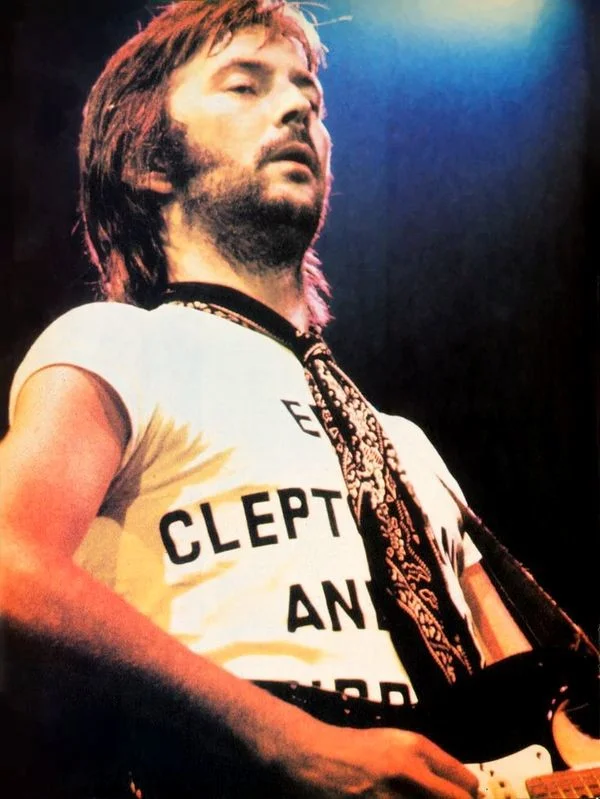
The most notable milestones of the second half of the 1970s for Eric were the albums No Reason to Cry (with Bob Dylan and the Canadian-American folk group The Band, 1976), and Slowhand (1977). And in 1976, Clapton performed as a guest at the Band's farewell performance, filmed in Martin Scorsese's documentary The Last Waltz (1978).
In 1981, producer Martin Lewis invited the musician to appear on The Secret Policeman's Other Ball on the BBC, a series of charity satirical events for the human rights organization Amnesty International. Clapton accepted the invitation and, teaming up with guitarist Beck (who replaced him in the Yardbirds), performed a series of duets, three of which were released on the album. And further performances at London's Drury Lane - the Theatre Royal, Drury Lane - heralded Clapton's return to form. 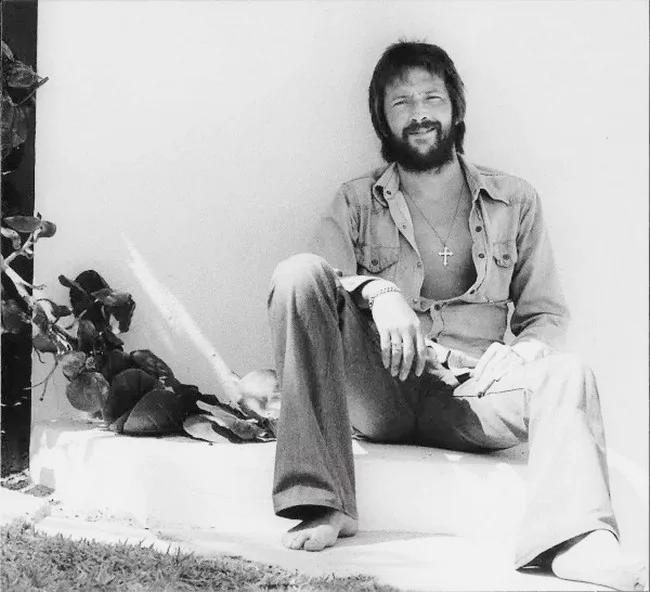
In addition, in January 1982, Eric flew to Hazelden's Medical Center in Center City (Minnesota, USA) to get rid of his addictions.
After being discharged, doctors recommended that Clapton not participate in activities that could provoke his alcoholism or stress. But after a couple of months, despite the instructions, he began working on his next album. Working with American sound engineer Tom Dowd of the Atlantic Records label, Eric released what he considered his "most forced" album - "Money and Cigarettes" (1983). 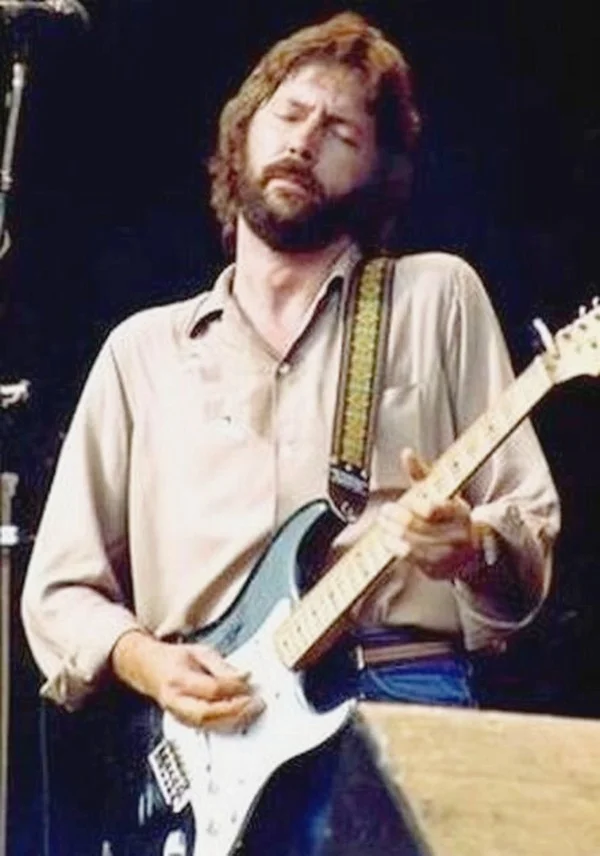
In 1984, Clapton took part in the recording of the solo album of the former Pink Floyd member Roger Waters "The Pros and Cons of Hitch Hiking", and joined the concert tour in support of it. From then on, they developed a close friendship. Then, on July 13, 1985, Eric played at "Live Aid" - an international charity festival organized to raise money for the victims of the famine in Ethiopia, to which he was very flattered by the invitation. 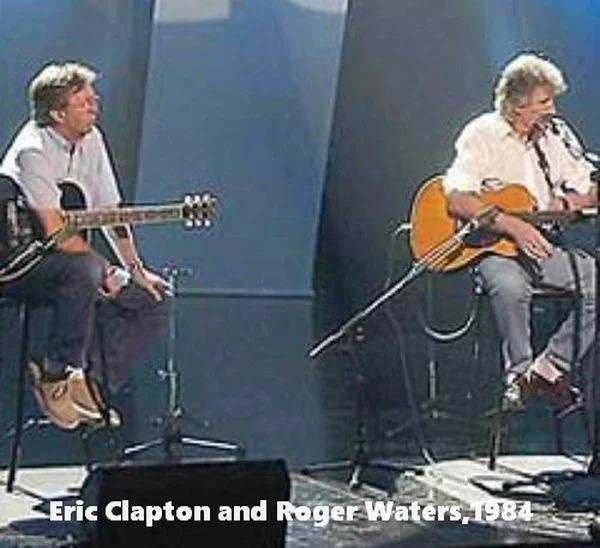
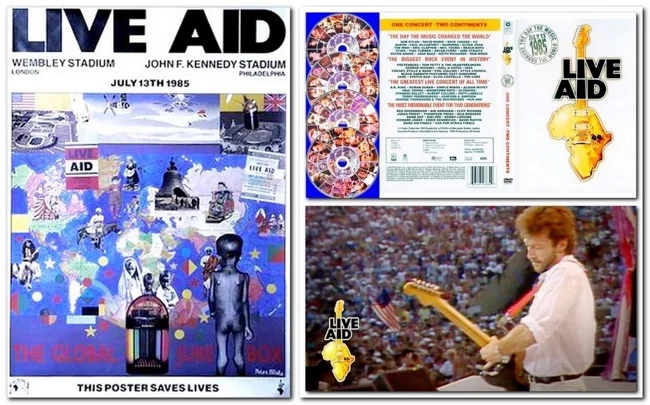
But that same year, Patti left Clapton, citing the musician's alcoholism and numerous affairs on the side (the official divorce was finalized only in 1988).
"The blues is a song about a man who has no woman. Or a man who has been left by a woman. Or a man who has nothing like a woman" (E. Clapton). 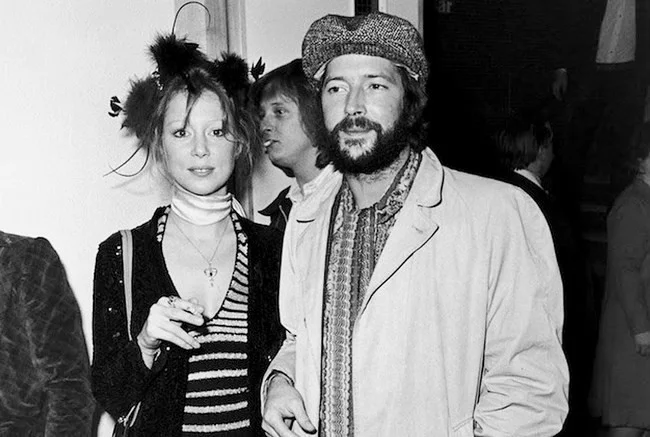
Yes, Eric loved women (and they loved him). So, in 1984, during the recording of "Behind The Sun" he had an affair with the manager of "AIR Studios Montserrat" Yvonne Han Kelly. Although at that time both were married, in January 1985 they had a daughter Ruth Kelly. Her existence was hidden for a long time, the truth was revealed only in 1991 "thanks" to journalists.
And after breaking up with Boyd, Clapton started an affair with the Italian model Lori del Santo, to whom he dedicated the song "Lady of Verona". On August 21, 1986, the couple had a son, Conor. 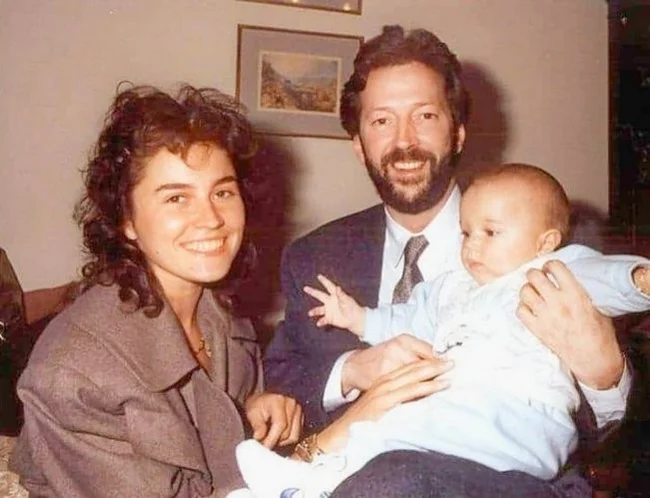
Laurie del Santo, Eric Clapton and their son Conor
In 1996, Clapton had a relationship with singer Sheryl Crow, which soon ended, but the musicians remained friends, and Eric even appeared as a guest at Sheryl's concert in Central Park. Together they performed "White Room" from Cream's repertoire.
In 1998, in Columbus (Ohio, USA), at a party organized after his performance, 53-year-old Clapton met 22-year-old administrative assistant Melia McEnery. They dated secretly for a year until they decided to go public with their relationship in 1999 and were officially married in January 2002. They had three daughters together: Julie Rose (13.06.2001), Ella May (14.01.2003) and Sophie Belle (1.02.2005). 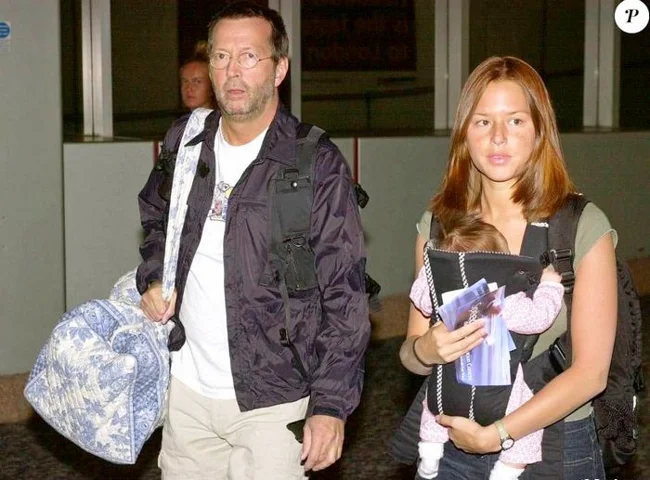
Eric Clapton and Melia McEnery 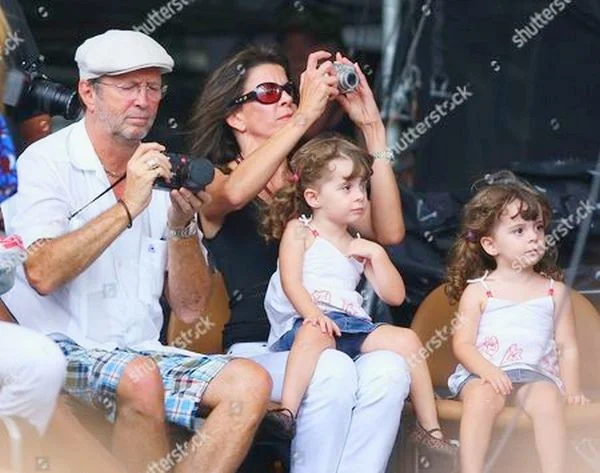
Eric Clapton with his wife and daughters at the Crossroads Guitar Festival in Chicago (Illinois), 2007
Eric, having gotten rid of his bad habits, began recording again: he released 2 albums produced by Phil Collins (Genesis) - "Behind the Sun" (1985) and "August" (1986). The latter, filled with Collins' trademark drums and brass, is Clapton's best-selling album in the UK to date (Top 3 in the charts). And the track "It's in the Way That You Use It" later appeared in the film "The Color of Money" (directed by M. Scorsese, 1986). Collins' influence is very noticeable on the album, although the tracks "Tearing Us Apart" (where Tina Turner sang) and "Miss You" also represented Clapton's usual harder sound.
After recording the joint album, Eric and Phil went on a 2-year tour, accompanied by bassist Nathan East and keyboardist Greg Phillingan, who also took part in the recording of "August". As a result, 2 concert videos of this line-up were recorded: "Eric Clapton Live from Montreux" and "Eric Clapton and Friends". 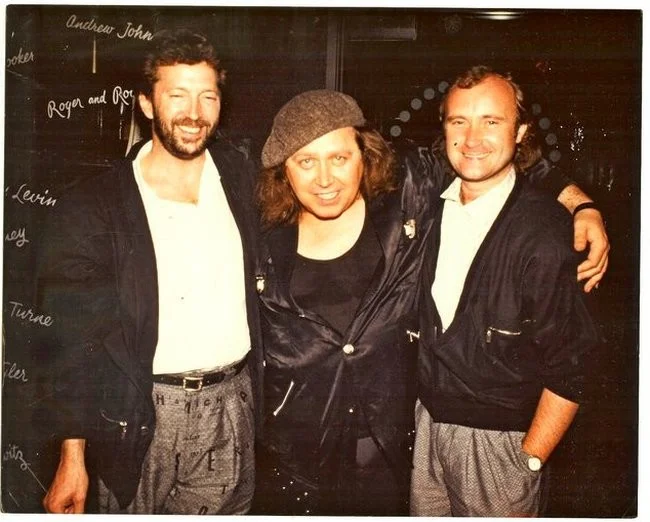
Clapton, Kinison, Collins, 1980s
Then Clapton and the Bee Gees, calling themselves The Bunburys, recorded a mini-album called The Bunbury Tails, the proceeds of which went to help one of the English charities. It included only three songs: We're the Bunburys, Bunbury Afternoon and Fight (No Matter How Long), the last of which was included in the soundtrack to the XXIV Summer Olympic Games in 1988 (Seoul, South Korea) and took 8th place in the world charts.
The following year, Clapton released the album Journeyman, covering a wide range of musical styles, including blues, jazz, soul and even pop. He was assisted in the recording by Harrison (with whom Eric remained friendly, despite the story with Patti), Collins, Daryl Hall, Chaka Khan, Mick Jones, David Sanborn and Robert Cray. 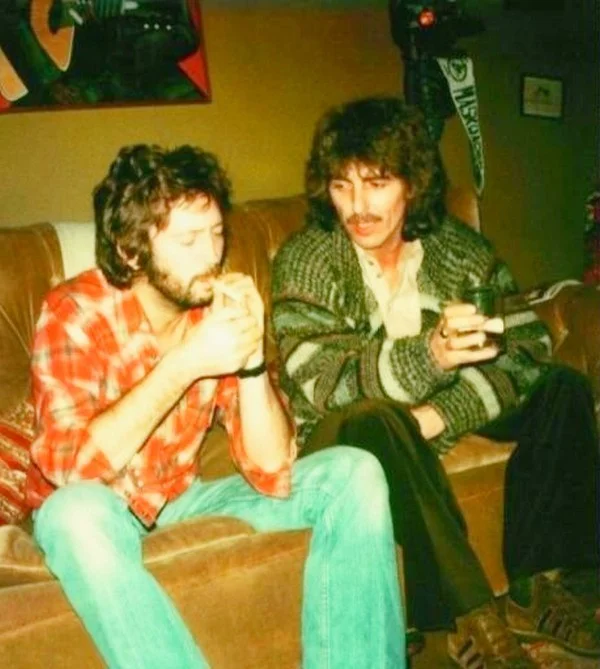
Eric Clapton and George Harrison
The beginning of the 1990s was marked for Eric by a series of 32 concerts at the Royal Albert Hall. The material from the tour was included in the album "24 Nights".
And then a series of tragedies followed. On August 27, 1990, blues guitarist Stevie Ray Vaughan, who was touring with Clapton, died in a helicopter crash. And on March 20, 1991, Eric's son Conor crashed, falling from the window of his friend's 53rd floor apartment in Manhattan, New York. He was not yet 5 years old... The baby's funeral took place on March 28 at St. Mary Magdalene Church in Clapton's home village of Ripley. 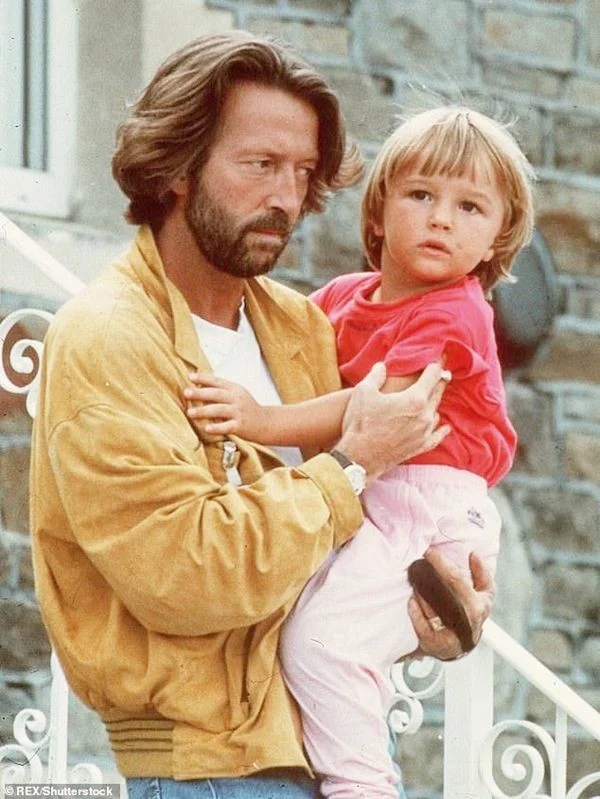
Eric and Conor Clapton 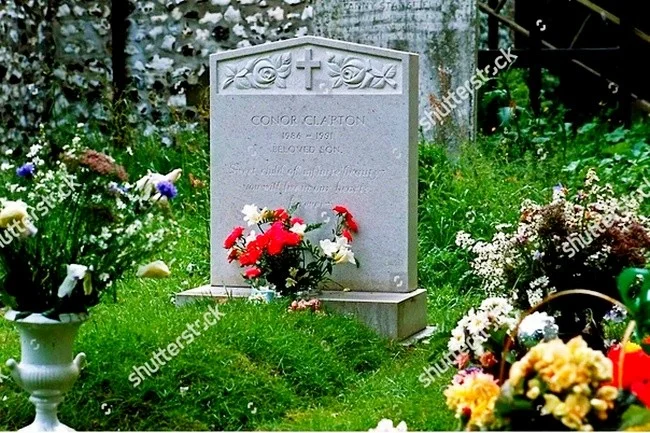
The musician fell into depression for almost a year, and expressed his grief in the touching ballad "Tears in Heaven", co-written with American songwriter Will Jennings. For it, Clapton received 6 Grammy awards at the 35th annual music awards of the American National Academy of Recording Arts and Sciences (NARAS). And the album "Unplugged", which included it, took 1st place in the list of "200 most popular music albums in the USA" of "Billboard" magazine, and was certified based on sales by the Recording Industry Association of America (RIAA) as "diamond" - more than 10 million copies were sold in the States. In the UK, it reached 2nd place in the charts, and is certified four times "platinum". On September 9, 1992, Clapton performed "Tears in Heaven" at the "MTV Video Music Awards", where he received the award for best video. That same year, the musician received the Ivor Novello Award of the British Academy of Songwriters and Composers for lifetime achievement. 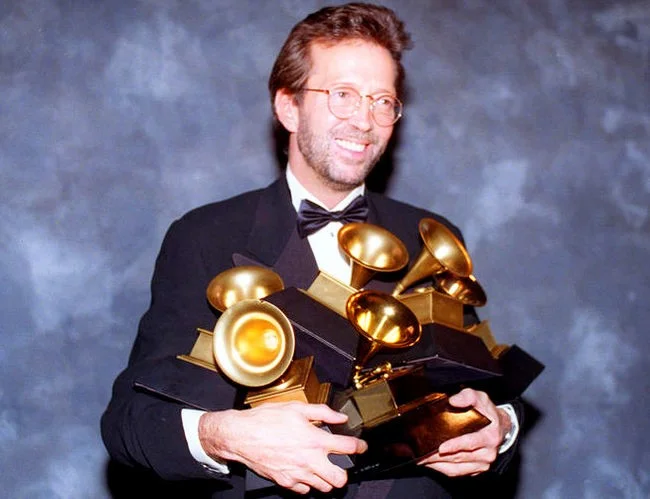
In October 1992, Clapton performed at Madison Square Garden in New York City, at a concert dedicated to the 30th anniversary of Bob Dylan's artistic career.
And in 1995, Eric, along with Chrissie Hynde, Cher and Neneh Cherry, recorded the song "Love Can Build a Bridge" to help the British charity fund "Comic Relief". It became Clapton's first and only work to top the British charts.
In 1996, Clapton recorded the song by American authors Wayne Kirkpatrick, Gordon Kennedy and Tommy Sims "Change the World" as a soundtrack for the film "Phenomena" (directed by Jon Turtletaub, 1996) and received a Grammy for "Song of the Year-97" for it. In the same year, with Simon Climie (ex-Climie/Fisher), he recorded an album of electronic music "Retail Therapy". 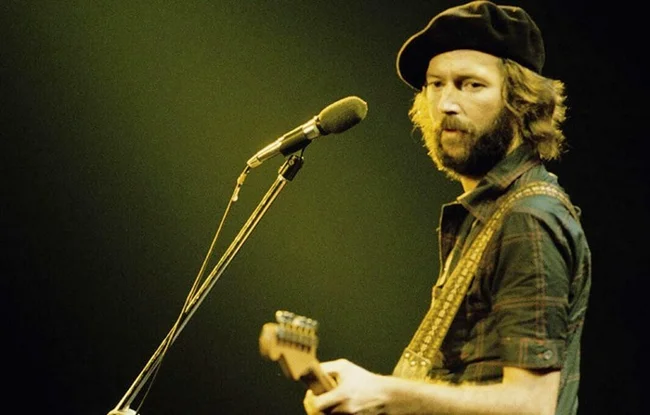
On September 15, 1997, Clapton appeared at the Music for Montserrat concert at the Royal Albert Hall, performing "Layla" and "Same Old Blues" and then "Hey Jude" with McCartney, Collins, Elton John, Mark Knopfler (Dire Straits, more here: Unbound) and Sting. That same autumn, he released "Pilgrim", his first album to contain new material in 10 years.
On February 24, 1999, at the 41st Grammy ceremony, Eric received his 3rd award in the category "Best Pop Vocal Performance" for the song "My Father's Eyes". And in October of the same year, he released the collection "Clapton Chronicles: The Best of Eric Clapton", with a new song "Blue Eyes Blue", which was included in the soundtrack to the film "Runaway Bride"/ Runaway Bride, directed by Garry Marshall, 1999). 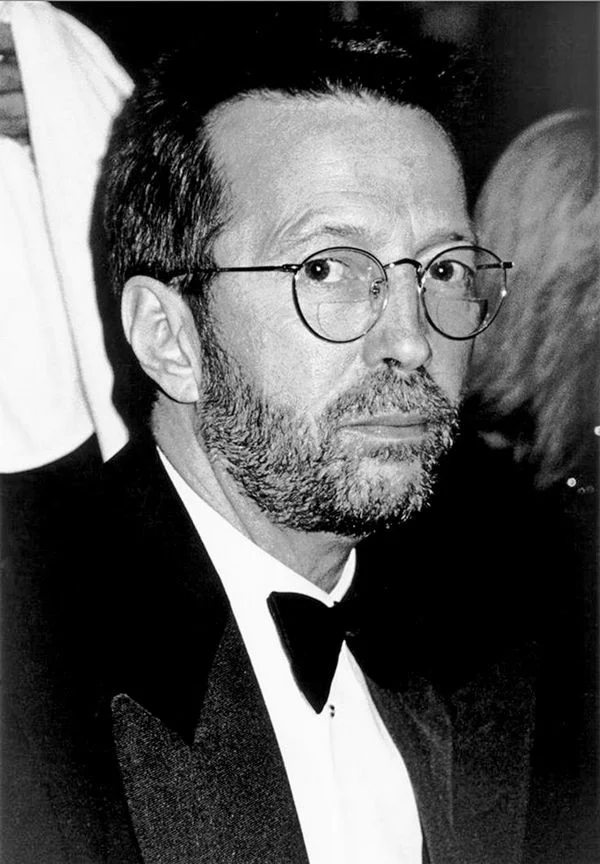
And in June 2000, the musician realized his long-standing dream - together with B.B. King, he released a blues album "Riding with the King". Then, in March 2001, he released another solo album, “Reptile,” which received positive reviews from critics and was a commercial success (more than 2.5 million copies were sold). 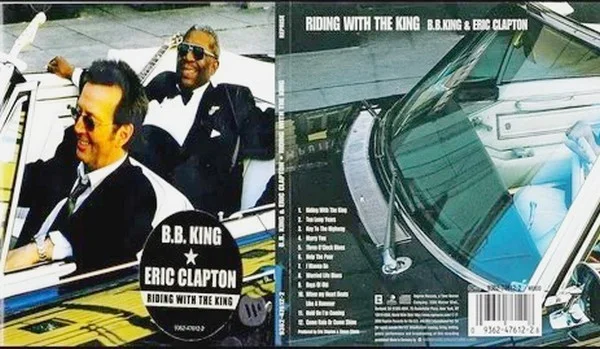
A month after the September 11, 2001, terrorist attacks, Clapton appeared at a memorial concert in New York, where he performed with Buddy Guy.
In June 2002, Eric performed at Buckingham Palace, at the concert "Party at the Palace", dedicated to the "golden" jubilee of Queen Elizabeth II, performing the compositions "Layla" and "While My Guitar Gently Weeps".
And on November 29, 2002, a concert in memory of George Harrison, who died a year earlier from lung cancer, was held at the Royal Albert Hall, where Clapton was not only a performer, but also musical director. It also featured McCartney, Starr, Shankar, Jeff Lynne, Tom Petty and The Heartbreakers, Gary Brooker, Billy Preston, Joe Brown and Harrison's son Dhani. 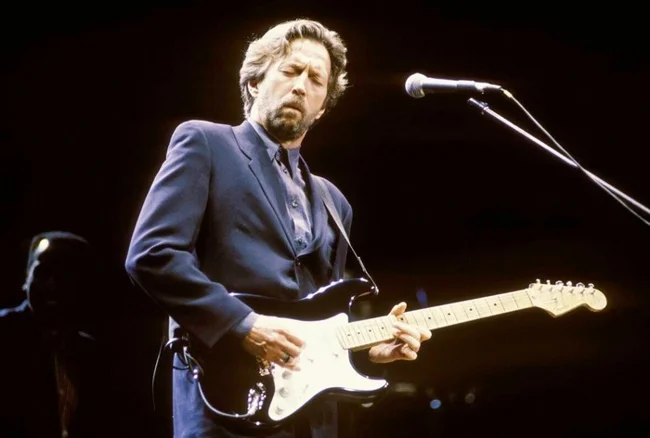
In 2004, Clapton released a "double" of "Me and Mr. Johnson", consisting of cover versions of songs by bluesman Robert Johnson. Guitar parts were also performed by the son of drummer Doyle Bramhall (The Nightcrawlers) - Doyle Bramhall II, who then accompanied Eric on tour. That same year, Rolling Stone magazine placed Clapton at number 53 on its list of "100 Greatest Artists of All Time".
On January 22, 2005, the musician performed at the Millennium Stadium/Stadiwm y Mileniwm (Cardiff, Wales) at a concert in aid of victims of the tsunami in Southeast Asia, caused by the earthquake on December 26, 2004 in the Indian Ocean. 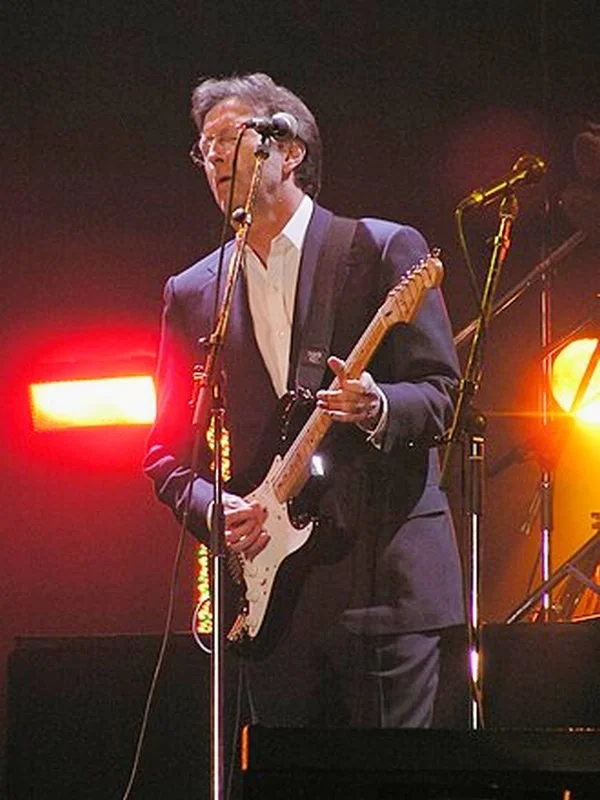
Clapton at a concert in Cardiff, Wales, January 22, 2005
And in May 2005, Clapton, Bruce and Baker, for a series of concerts at the Royal Albert Hall, decided to revive Cream. The material they recorded was released on CD and DVD. Later, with the same line-up, Cream performed at New York's Madison Square Garden. 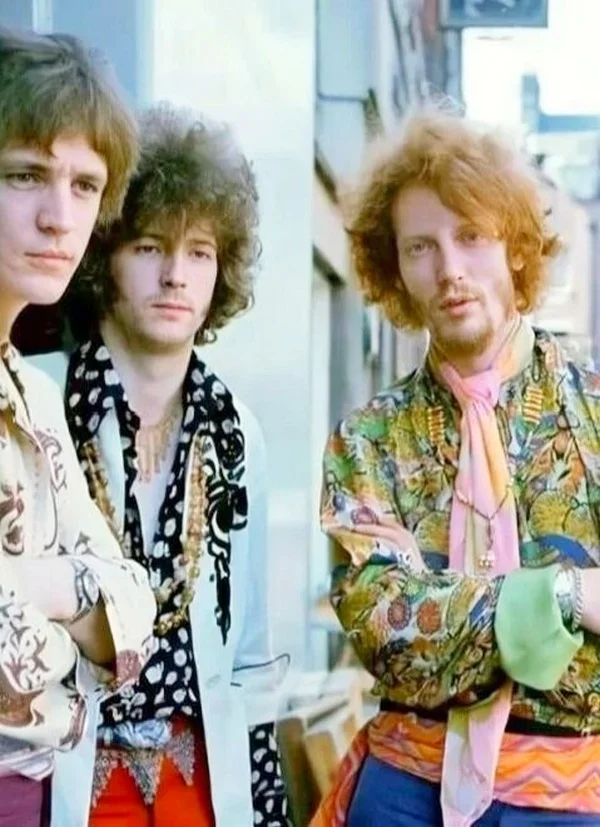
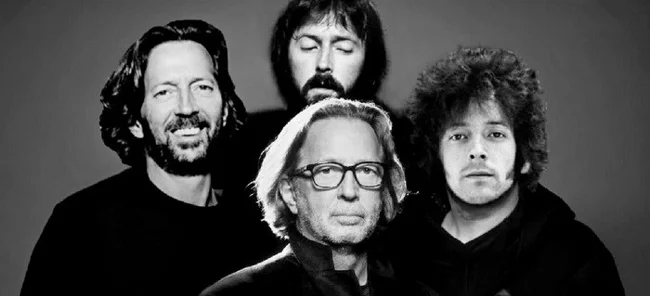
On August 30 of the same year, Reprise Records released Eric's solo album, Back Home, the first album with new material in almost 5 years.
In February 2008, Clapton played with old friend Winwood at Madison Square Garden and contributed to the single "Dirty City", which was included on Steve's album "Nine Lives". The former Blind Faith bandmates will meet again in June 2009 for a series of 14 concerts in the United States. And before that, Eric went on a summer tour, which began on May 3, 2008 at the Ford Amphitheatre (Tampa, Florida), and lasted in Canada, Ireland, England, Norway, Iceland, Denmark, Poland, Germany and Monaco.
On June 28, 2008, Clapton took part in the "Hard Rock Calling-2008" festival in London's Hyde Park along with Sheryl Crow and John Mayer. Then, in September of the same year, he performed at a charity event in Floridita, Soho, London, to raise money for the Countryside Alliance, a UK organisation promoting rural issues including farming, small rural businesses and field sports. Guests included the then Mayor of London, Boris Johnson.
Eric is a supporter of the Alliance, and in addition to performing at fundraising concerts for the organisation, he has campaigned against the Labour Party's proposal to ban fox, deer and hare hunting with dogs in England and Wales in The Hunting Act 2004. A spokesman for the musician said: "Eric supports the Countryside Alliance. He does not hunt himself but enjoys rural pursuits such as fishing and shooting. He supports the Alliance's bid to end the ban on the grounds that he does not agree with government interference in people's private affairs." 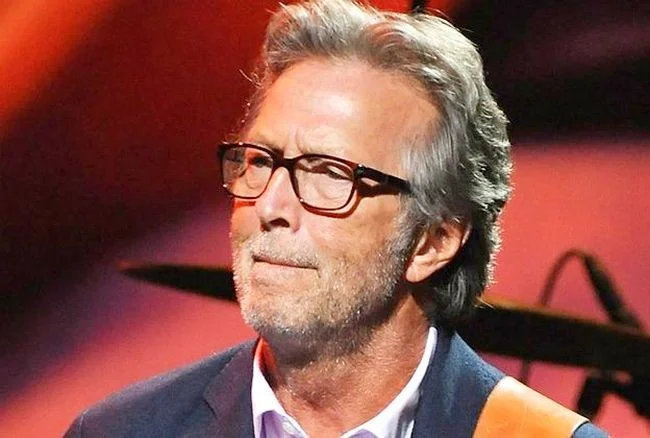
In March 2009, ABB celebrated their 40th anniversary at the Beacon Theatre in Manhattan, New York, with concerts dedicated to the late Duane Allman. Clapton was one of the invited guests.
Eric was scheduled to play at the 25th Anniversary Rock and Roll Hall of Fame Concert at Madison Square Garden on October 30, 2009, but had to cancel due to gall bladder surgery.
But 2010 turned out to be quite a fruitful year for Clapton. On February 13-14, he performed with Beck at the O2 Arena in London, then his Yardbirds colleagues gave concerts at Madison Square Garden, the Air Canada Centre in Toronto and the Bell Centre in Montreal. And on his own, Eric gave a series of concerts in 11 US cities from February 25 to March 13, and went on a short tour of North America, which began with a performance at the III Crossroads Guitar Festival on June 26 at Toyota Park (Bridgeview, Illinois) and ended on July 3. Along the way (in September), he released a new studio album, Clapton, consisting of covers of songs by various musicians. On November 17, he guested at the Prince's Trust Rock Gala at the Royal Albert Hall, backed by a band that included Jools Holland, Midge Ure and Mark King. 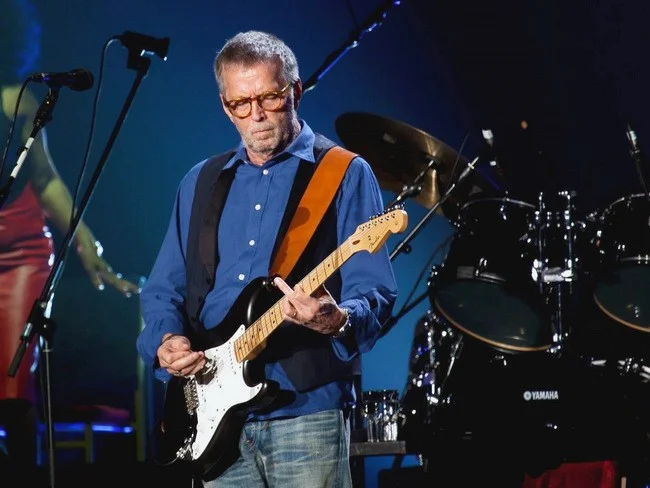
Eric didn't stop the following year, either: on June 24, he played a concert with Italian singer-songwriter Giuseppe "Pino" Daniele at the Cava de' Tirreni Stadium in Salerno, Italy, before playing a series of shows in South America from October 6 to 16, and in November and December, he toured Japan with Winwood, playing 13 shows in various cities.
On February 24, 2012, together with Keith Richards (more details here: Keith of World Rock), Gary Clarke Jr., Derek Trucks, Bramhall Jr., Kim Wilson and others, Clapton performed at the Howlin' For Hubert Tribute concert, held at the Apollo Theater (New York) in memory of American blues guitarist Hubert Sumlin, who died on December 4, 2011. 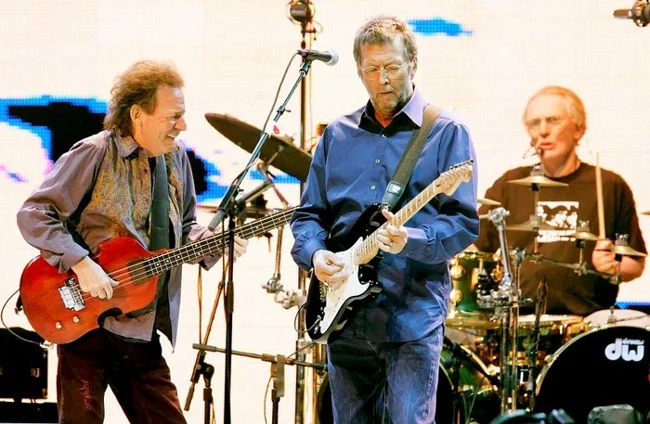
Keith Richards and Eric Clapton
At the end of the year, on November 29, Eric joined the Rolling Stones at the O2 Arena for the 2nd of their 50th anniversary shows. And on December 12, he performed at Madison Square Garden for the benefit of those affected by Hurricane Sandy in October 2012, which affected Jamaica, Cuba, the Bahamas, Haiti and the Florida coast. The concert was broadcast live on TV, radio, in cinemas and online on all 6 continents.
From March 14 to June 19, 2013, the musician toured the USA and Europe with concerts in honor of the 50th anniversary of his professional activity. And on October 15, he re-released the album "Unplugged", which included 14 remastered original tracks, as well as 6 additional ones, including 2 versions of the song "My Father's Eyes". The album, released on DVD, also included a restored version of the concert, as well as more than 60 minutes of previously unseen footage from rehearsals. On November 13 and 14 of the same year, Eric was the headliner of the last 2 evenings of the music festival "Baloise Session" (Basel, Switzerland). 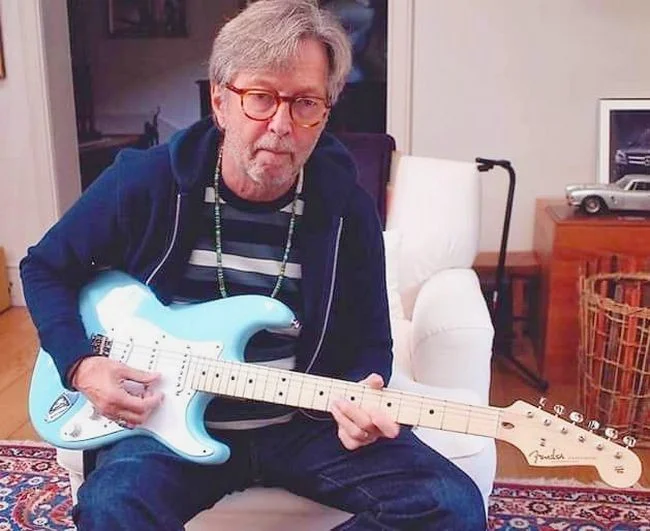
On April 30, 2014, Clapton announced the release of The Breeze: An Appreciation of JJ Cale as a tribute to JJ Cale, who died on July 26, 2013. The tribute, named after the 1972 single "Call Me the Breeze", featured 16 Cale songs performed by Clapton, Knopfler, Mayer, Petty, Willie Nelson and others. 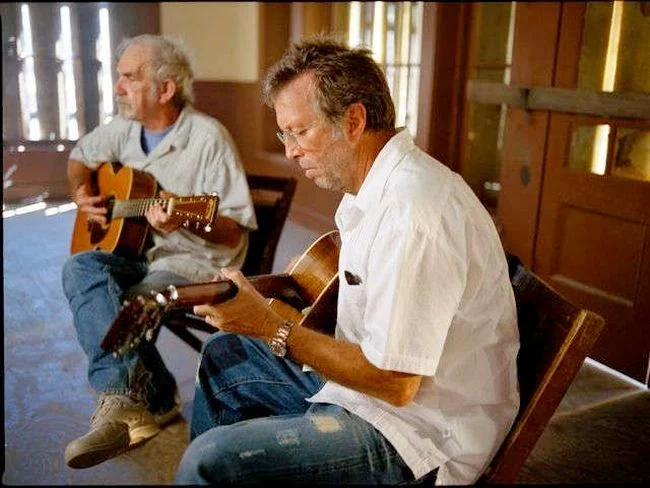
JJ Cale and Eric Clapton
In late June 2014, Eric announced his "retirement plans," citing the travel as "unbearable" in addition to "strange ailments" that could force him to put the guitar down for good. In an interview with Classic Rock magazine, he revealed that he had been diagnosed with peripheral neuropathy back in 2013, a condition involving damage to the peripheral nerves that causes stabbing or burning pain in the arms and legs. 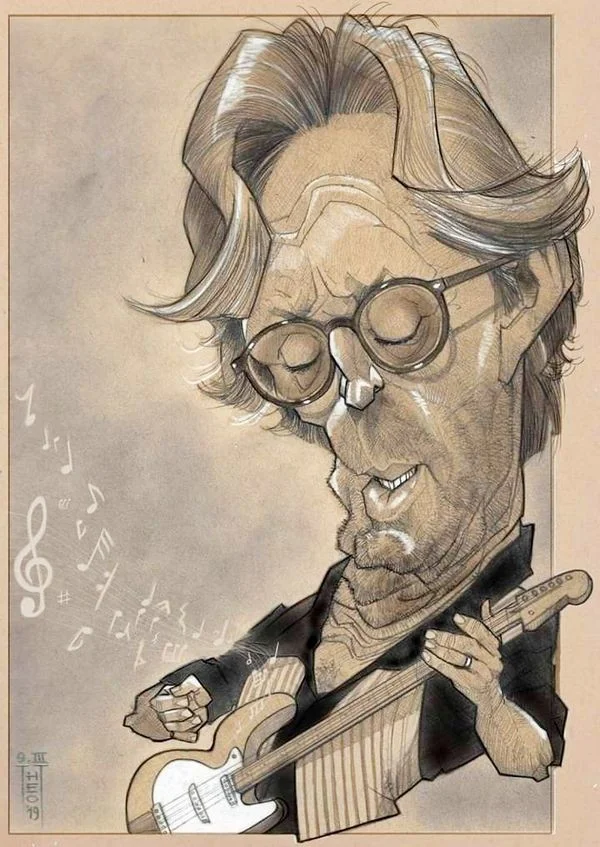
Nevertheless, on May 1 and 3, 2015, the musician gave 2 concerts in Madison Square, and then from May 14 to 23, for 7 evenings, he celebrated his 70th birthday at the Royal Albert Hall. The show also marked the 50th anniversary of his first performance at this hall (on November 13, 2015, Eagle Rock Entertainment released a film from the concert - "Slowhand at 70. Live at the Royal Albert Hall" on DVD, CD, Blu-Ray and vinyl). The two weeks of concerts in the US that followed also marked the 46th anniversary of Clapton and Cream opening the “new” Madison Square Garden on November 2, 1968. Eric has performed at this venue more than anywhere else in the US — 45 times. 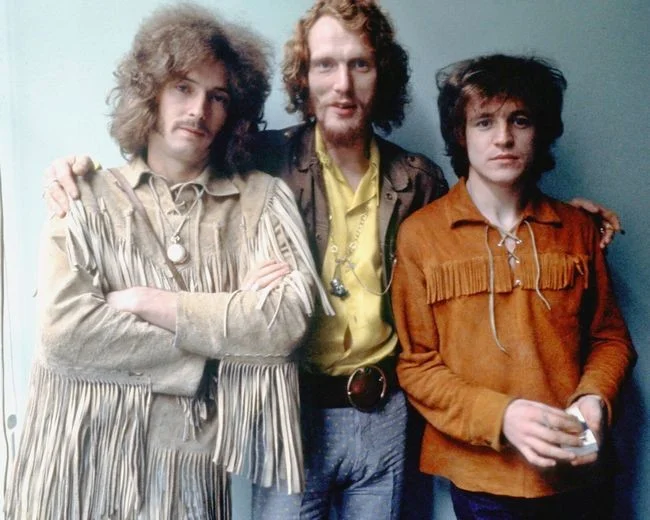
On May 20, 2016, Clapton released his 23rd studio album, “I Still Do,” and on September 30, a live album, “Live in San Diego.” And in August 2018, he recorded his 24th album, “Happy X-mas,” consisting of blues interpretations of Christmas songs.
Eric did return to touring: he played 8 concerts in the southern United States in September 2021, gave another 7 concerts in the States with Vaughan in September of the following year, and in May 2023 he performed at a Beck tribute concert at the Royal Albert Hall, sharing the stage with Rod Stewart, Ronnie Wood, Kirk Hammett and even Johnny Depp. 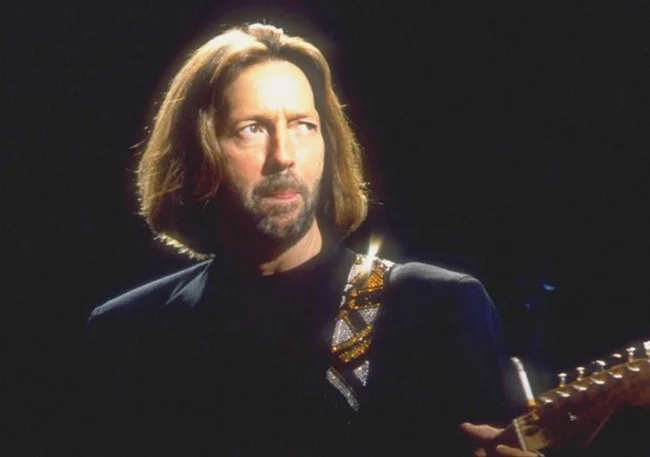
In 2024, Clapton played guitar on a reissue of Knopfler's "Going Home: Theme of the Local Hero", released in aid of the Teenage Cancer Trust.
Clapton's choice of electric guitars was notable, having a decisive and widespread influence on the popularization of specific models: in the Yardbirds he played a Fender Telecaster, a Fender Jazzmaster, a Gretsch 6120 twin-cutaway, and his signature cherry-red 1964 Gibson ES-335. He played exclusively Gibsons from 1965 onwards, when he bought a used 1960 Sunson Lesburst from a London guitar shop.
Clapton also played the ES-335 at Cream's final gig in 1968, as well as with Blind Faith, and occasionally used it in the 1970s. for playing slide parts, on the composition "Hard Times" from the album "Journeyman", at the concert in Hyde Park in 1996, on the album "From the Cradle" and on the 1994-95 tour. At auction in 2004, the guitar was sold for $847,500. 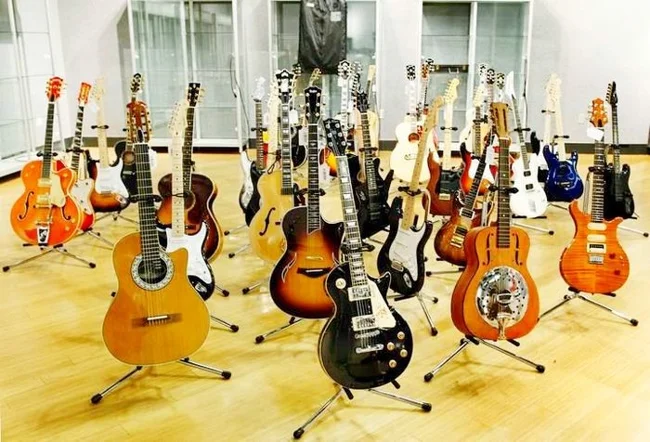
E. Clapton's Guitar Collection
Clapton is a fan of West Bromwich Albion FC from West Bromwich, West Midlands, playing in the English Premier League/APL. In the 1978/79 season, the musician even sponsored the club's home match against Turkish FC Galatasaray in the UEFA Cup. And in 1982, he performed with former club captain John Wile in a concert at WB's home stadium The Hawthorns before their anniversary match. Eric even put an image of the club's scarf on the back cover of his album Backless (1978). 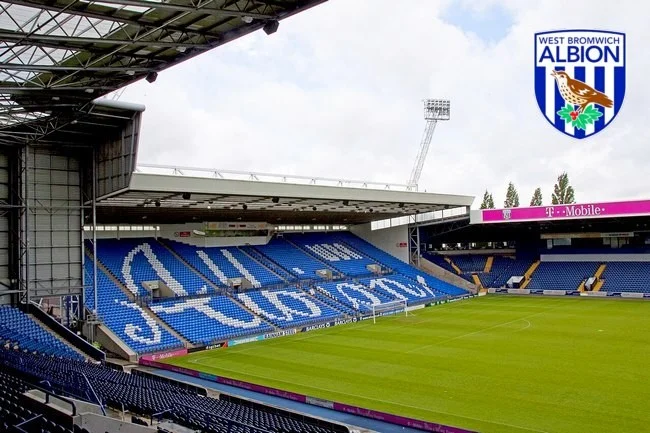
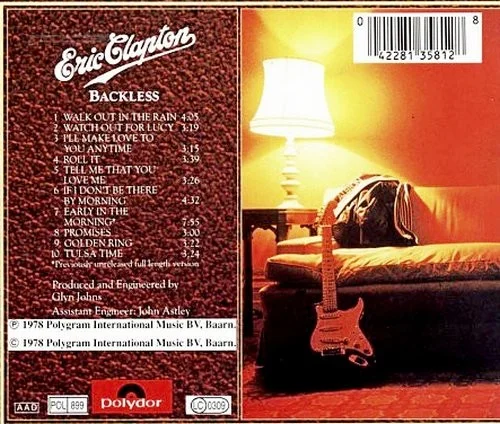
Since the 1970s, the musician has also considered himself a car enthusiast, stating his passion for the Ferrari brand. In 2010, he said that for him, "Ferrari has always been the No. 1 car" that he wants to drive, and he always supports Ferrari both on the road and in Formula 1 racing. In response, in 2012, Ferrari presented Clapton with a one-off Ferrari SP12 EC (Special Project-12 Eric Clapton), valued at $4.75 million. In July 2013, Eric demonstrated the car at the annual hill climb competition involving historic racing cars, the Goodwood Festival of Speed, at Goodwood House in West Sussex, England, as part of the Michelin Supercar Rally. Among the cars owned by the musician is a Mini Cooper Radford, given to him by Harrison. 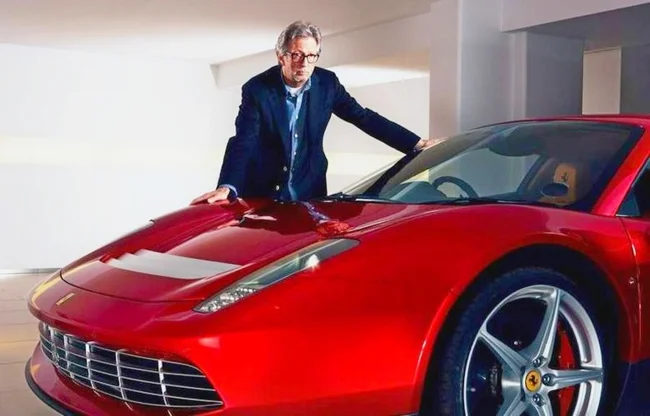
Eric is the organizer of the guitar festival "The Crossroads Guitar Festival" in support of the British rehabilitation center for drug and alcohol addicts "Clouds House" on the island of Antigua (Caribbean Sea, Lesser Antilles, Antigua and Barbuda). The festival was held in 2004, 2007, 2010 and 2013. At various times, Beck, BB King, John McLaughlin, Santana, ZZ Top and others took part in it (in addition to the organizer).
In addition to the number of documentaries he has appeared in, Eric also appeared in the film "Blues Brothers 2000" (directed by John Landis, 1998) as a member of the blues band Louisiana Gator Boys. In addition to this, he even had a small speaking role. 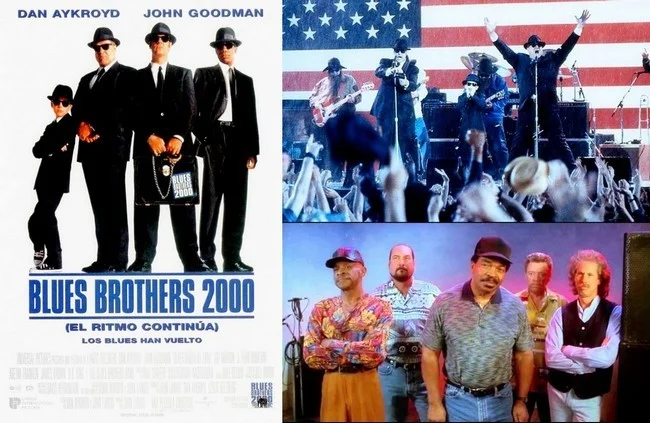
The rights to Clapton's official memoirs "Eric Clapton. The Autobiography, published by Arrow Books, London in 2008, was sold at the Frankfurt Book Fair/Frankfurter Buchmesse 2005 for $4 million, long before its release. The book received high marks in the non-music press, and the publication was doubly lucky: while it was supervised on the Western side by Eric's friend Christopher Simon Sykes, the translation, which also included editing, was done by jazz critic Alexander Belyaev, who not only conveyed the author's manner and style of narration, but also scrupulously verified the names and musical terminology. 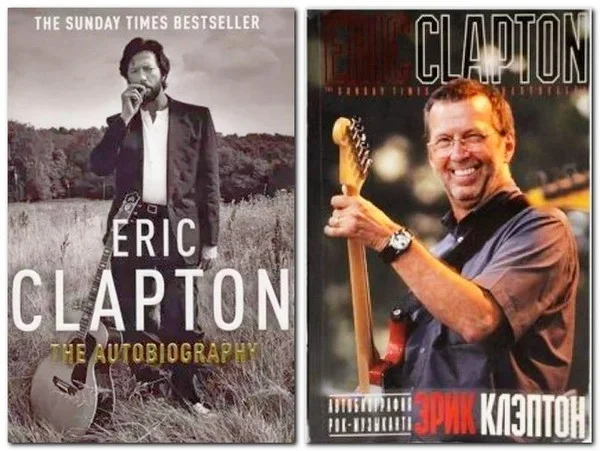
Clapton is the only musician to have been inducted into the Rock and Roll Hall of Fame in Cleveland (Ohio, USA) three times: as a member of the Yardbirds (1992) and Cream (1993), and as a solo artist (2000).
Writer and music editor of The Guardian Michael Hann wrote in this regard: “Nothing is more central to rock mythology than the cult of the lead guitarist. And no one has done more to create this cult than Eric Clapton. His reputation has grown to such an extent that famous graffiti has recorded his assessment from rock fans: ‘Clapton is a god.’” 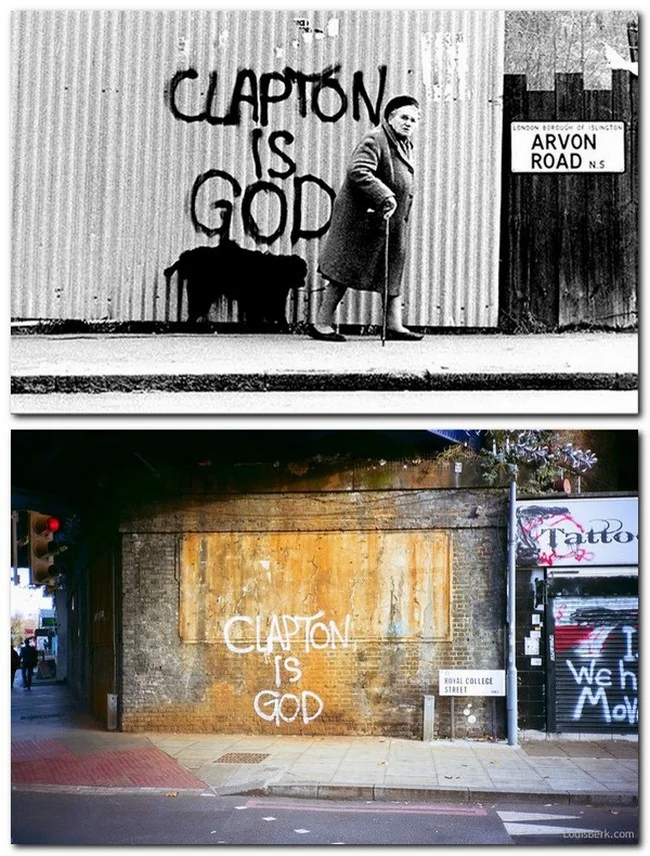
Eric Clapton is a living legend of rock music, but unlike many other legends who rest on their laurels, he remains an active and constantly evolving musician, although it would seem that there is nowhere further to develop. With every step he takes, he confirms that there are no limits to skill.
"The blues is an individual art. One man with a guitar against the world" (E. Clapton). 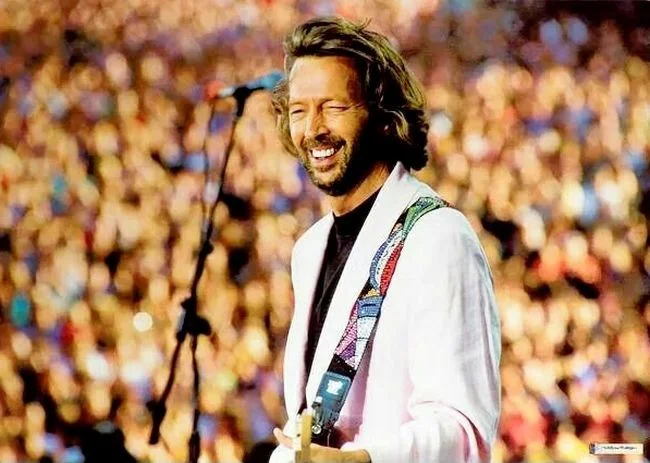
E. Clapton's discography:
Included:
The Yardbirds: "Five Live Yardbirds" (1964), "For Your Love" (1965), "Having a Rave Up with The Yardbirds" (1965), "Sonny Boy Williamson and the Yardbirds" (1965), "The Yardbirds Featuring Performances by: Jeff Beck, Eric Clapton, and Jimmy Page" (1971);
The Immediate All-Stars: “Blues Anytime Vol. 1" (collection, 1968), "Blues Anytime Vol. 2" (Sat., 1968), "Blues Anytime Vol. 3" (sat., 1968), "Guitar Boogie" (sat., 1971), "Hip Young Guitar Slinger" (sat.. 2000)
John Mayall & the Bluesbreakers: "Blues Breakers" (1966);
Eric Clapton and the Powerhouse: "What's Shakin'" (comp., 1966);
Cream: “Fresh Cream” (1966), “Disraeli Gears” (1967), “Wheels of Fire” (1968), “Goodbye” (1969), “Best of Cream” (sat., 1969), “Live Cream” (concert, 1970), “Live Cream. Vol.II» (1972), «Heavy Cream» (Sat., 1972), «Strange Brew» (Sat., 1983), «The Very Best of Cream» (Sat., 1995), «Those Were the Days» (box set, 1997), «20th Century Masters» (Sat., 2000), «BBC Sessions» (Sat., 2003), «Cream Gold» (Sat., 2005), «Royal Albert Hall London May 2-3-5-6, 2005» (live, 2005), «Icon» (Sat., 2011);
Blind Faith: «Blind Faith» (1969);
Delaney & Bonnie: «On Tour with Eric Clapton» (live, 1970);
Derek and the Dominos: «Layla and Other Assorted Love Songs» (1970), «In Concert» (live, 1973), «The Layla Sessions: 20th Anniversary Edition» (1990), «Live at the Fillmore» (live, 1994) 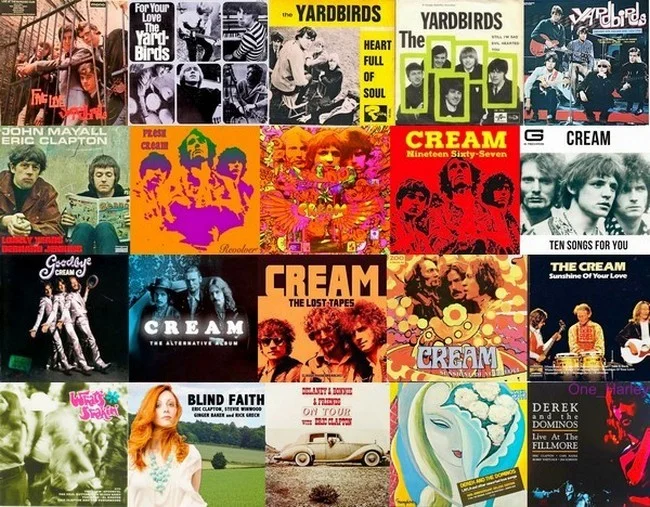
Solo:
Studio albums: «Eric Clapton» (1970), «461 Ocean Boulevard» (1974), «There’s One in Every Crowd» (1975), «No Reason to Cry» (1976), "Slowhand" (1977), "Backless" (1978), "Another Ticket" (1981), "Money and Cigarettes" (1983), "Behind the Sun" (1985), "August" (1986), "Journeyman" (1989), "From the Cradle" (1994), "Pilgrim" (1998), "Riding with the King" (with B.B. King, 2000), “Reptile” (2001), “Me and Mr. Johnson" (2004), "Back Home" (2005), "The Road to Escondido" (with JJ Cale, 2006), "Clapton" (2010), "Old Sock" (2013), "The Breeze: An Appreciation of JJ Cale" (2014), "I Still Do" (2016), "Happy X-mas" (2018), "Meanwhile" (2024);
Live albums: “Eric Clapton’s Rainbow Concert” (1973), “E.C. Was Here (1975), "Just One Night" (1980), "24 Nights" (1991), "Unplugged" (1992), "One More Car, One More Rider" (2004), "Live from Madison Square Garden" (with Steve Winwood, 2009). 